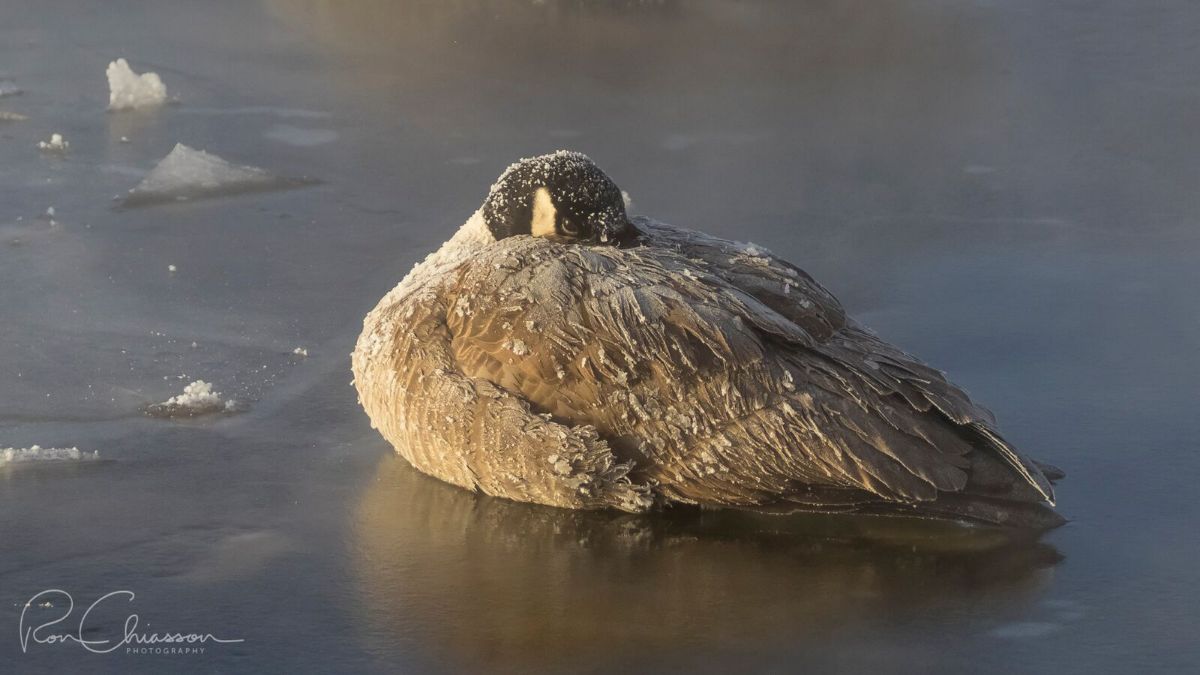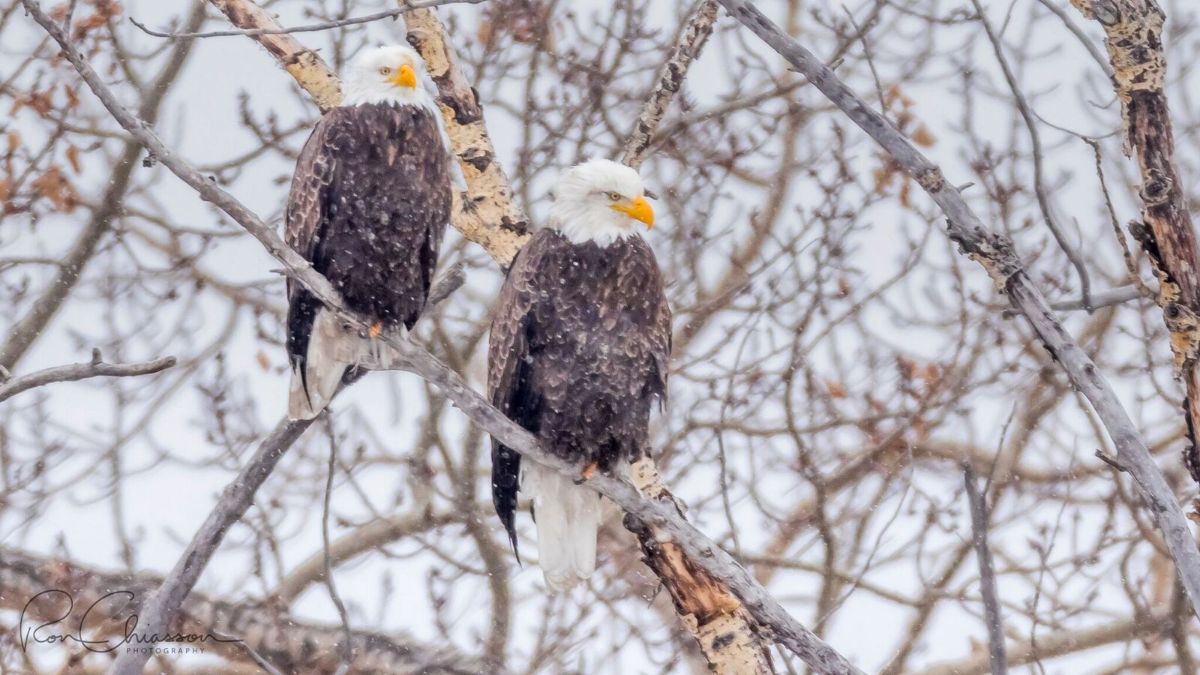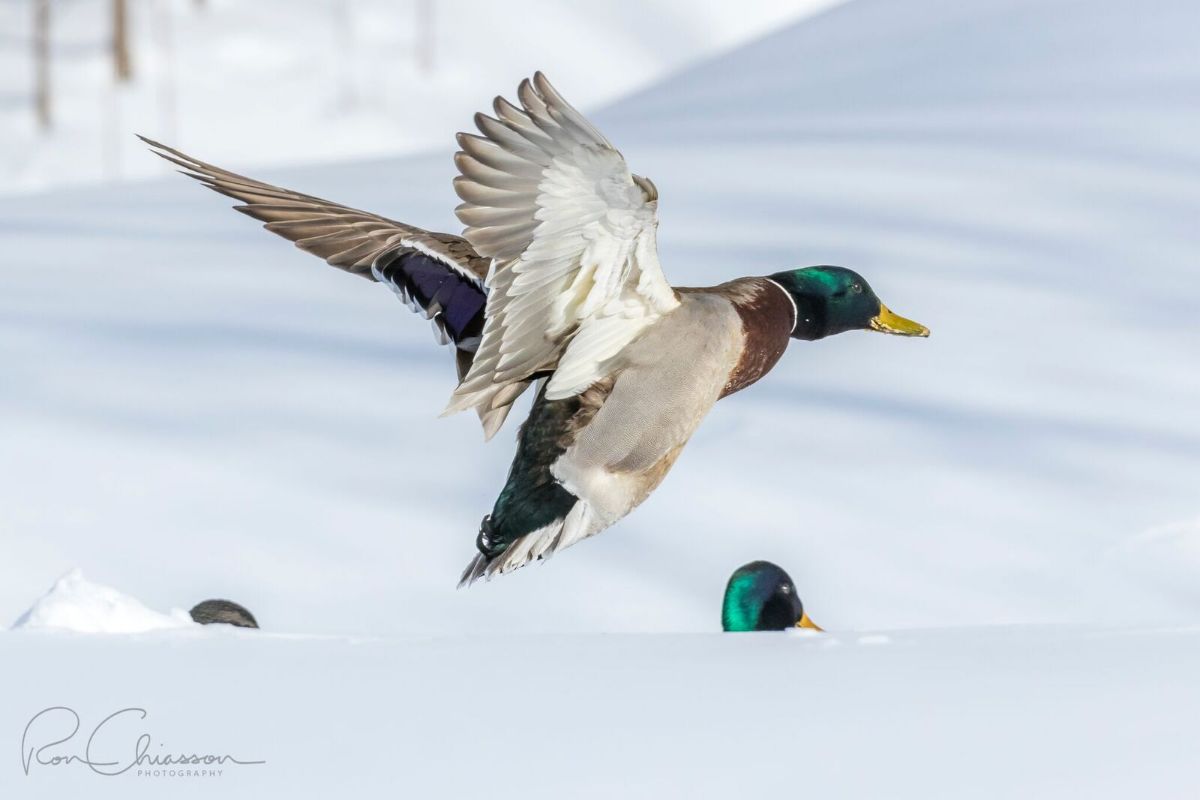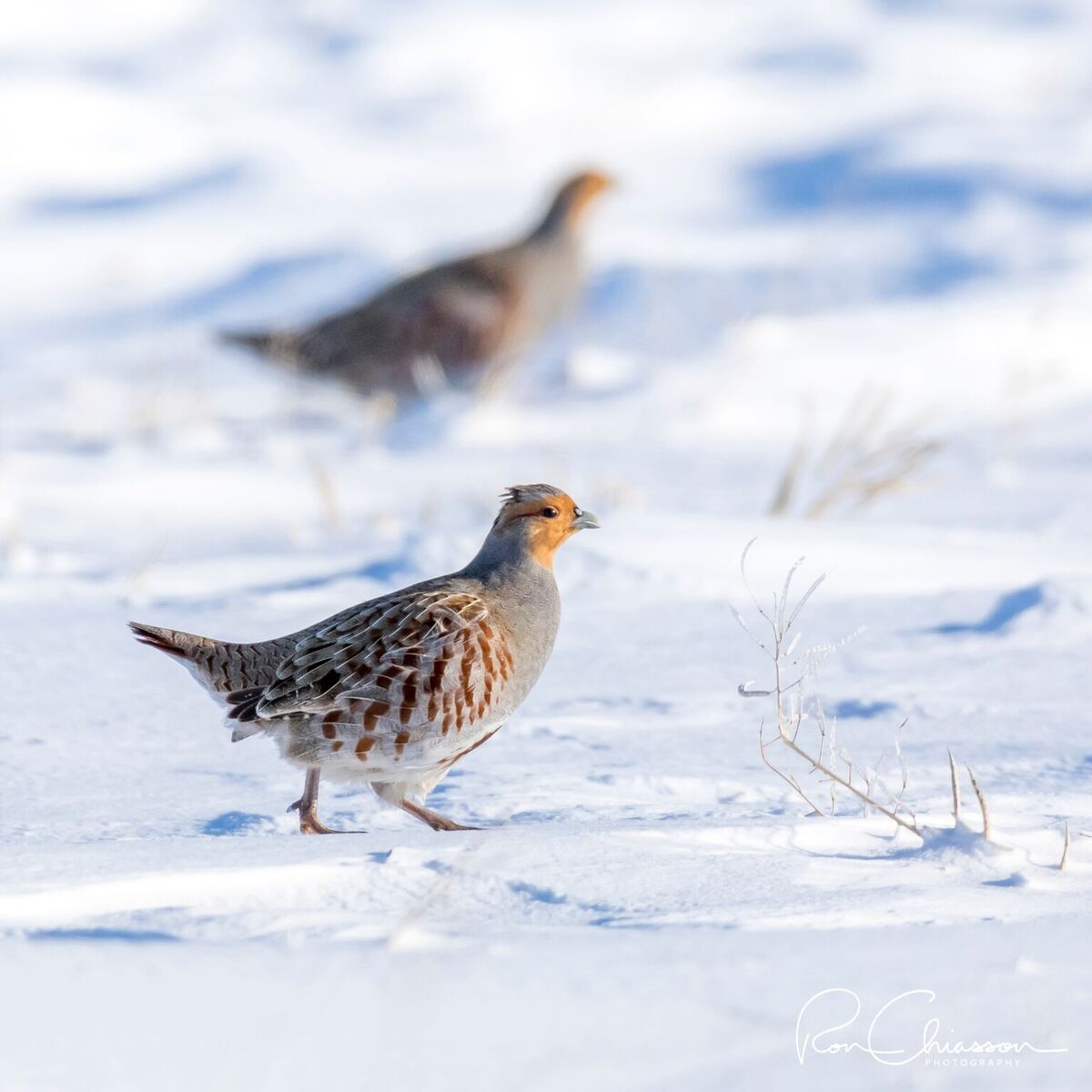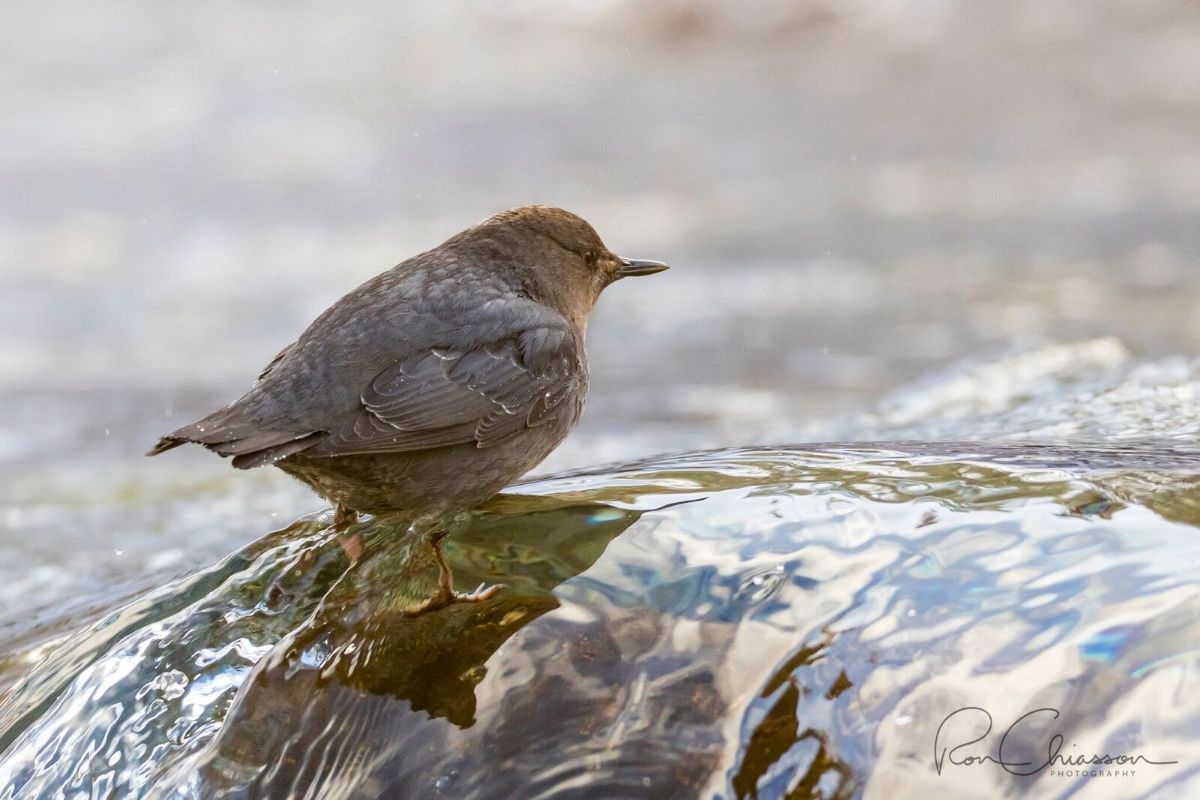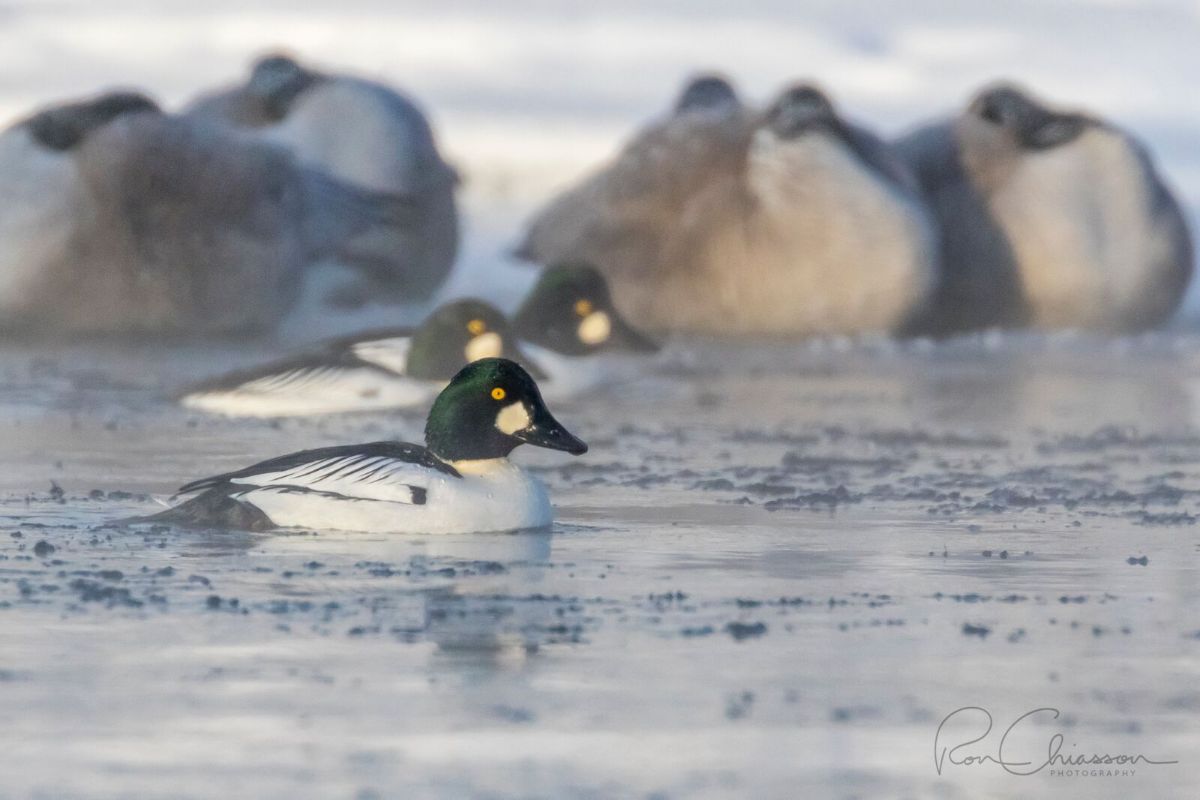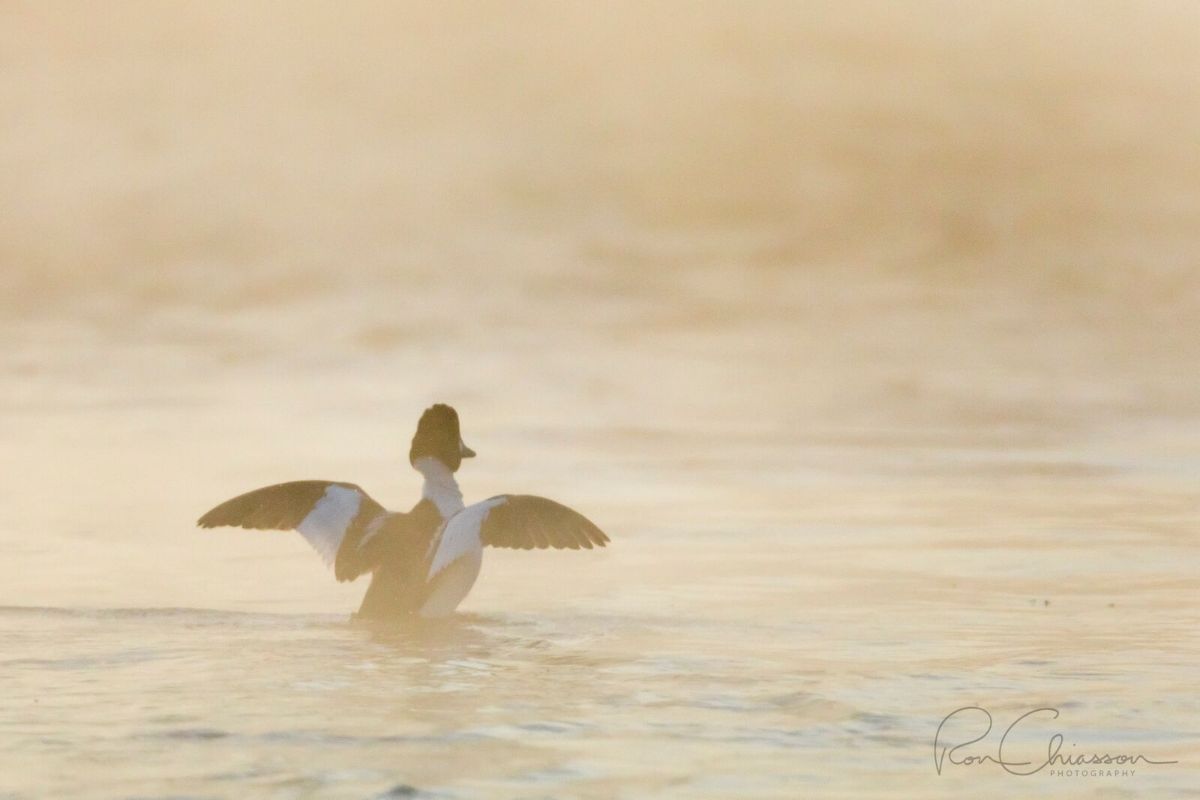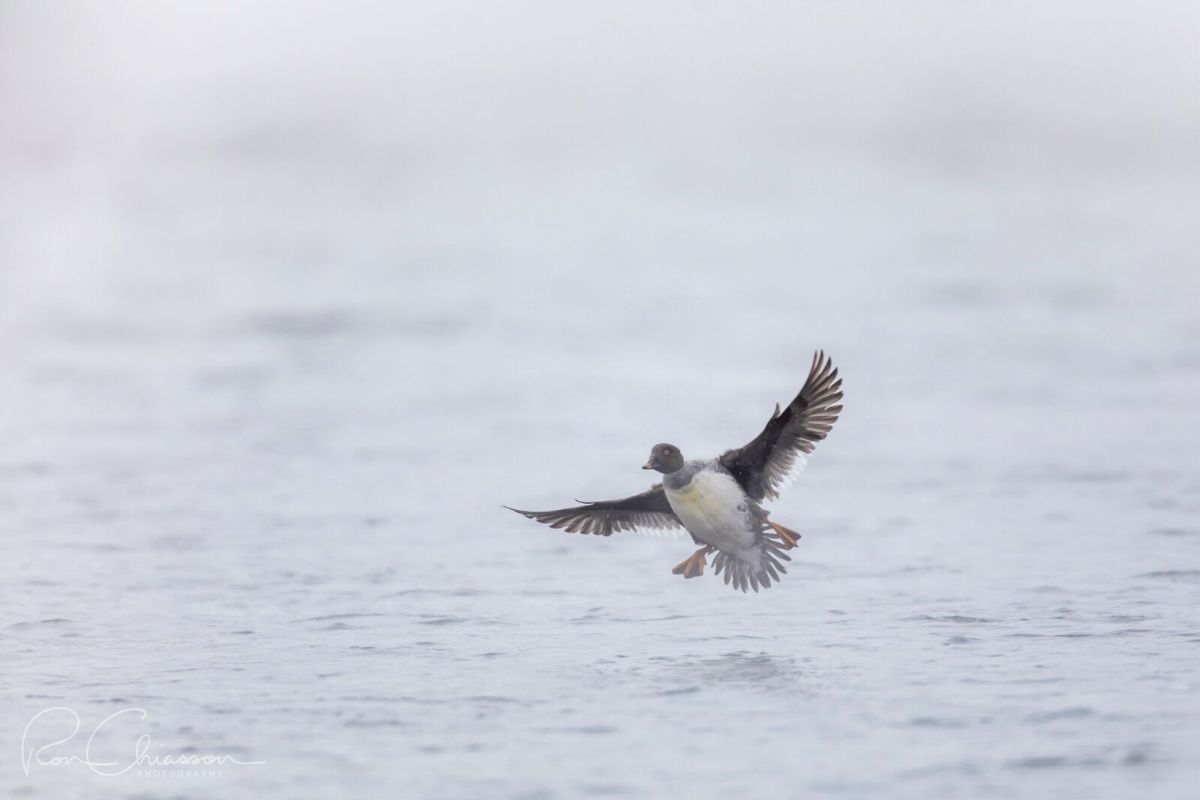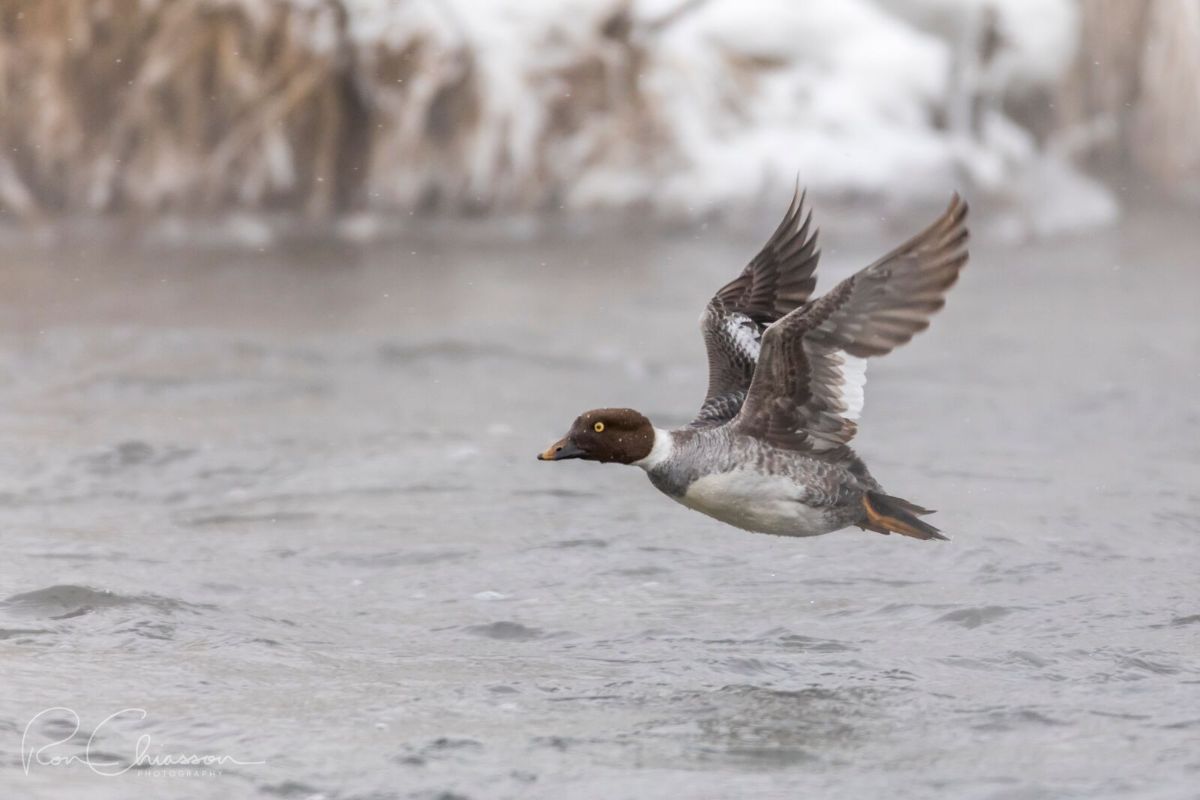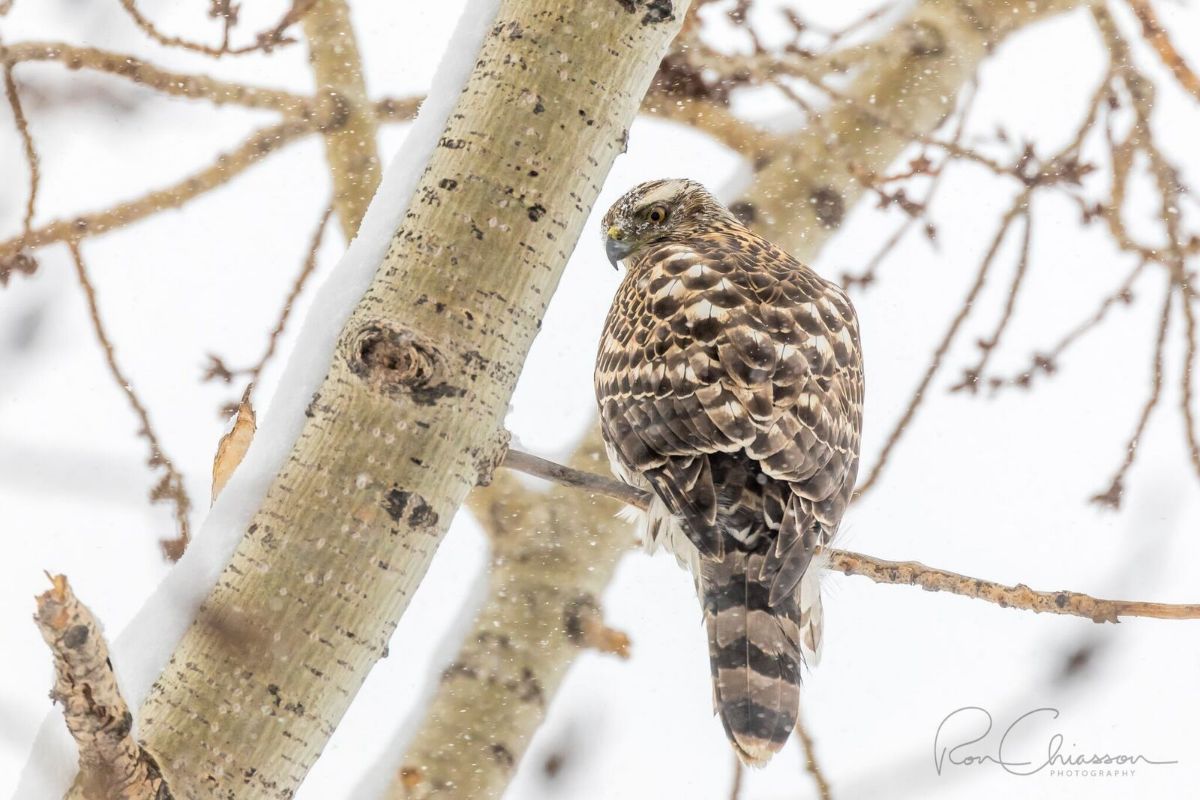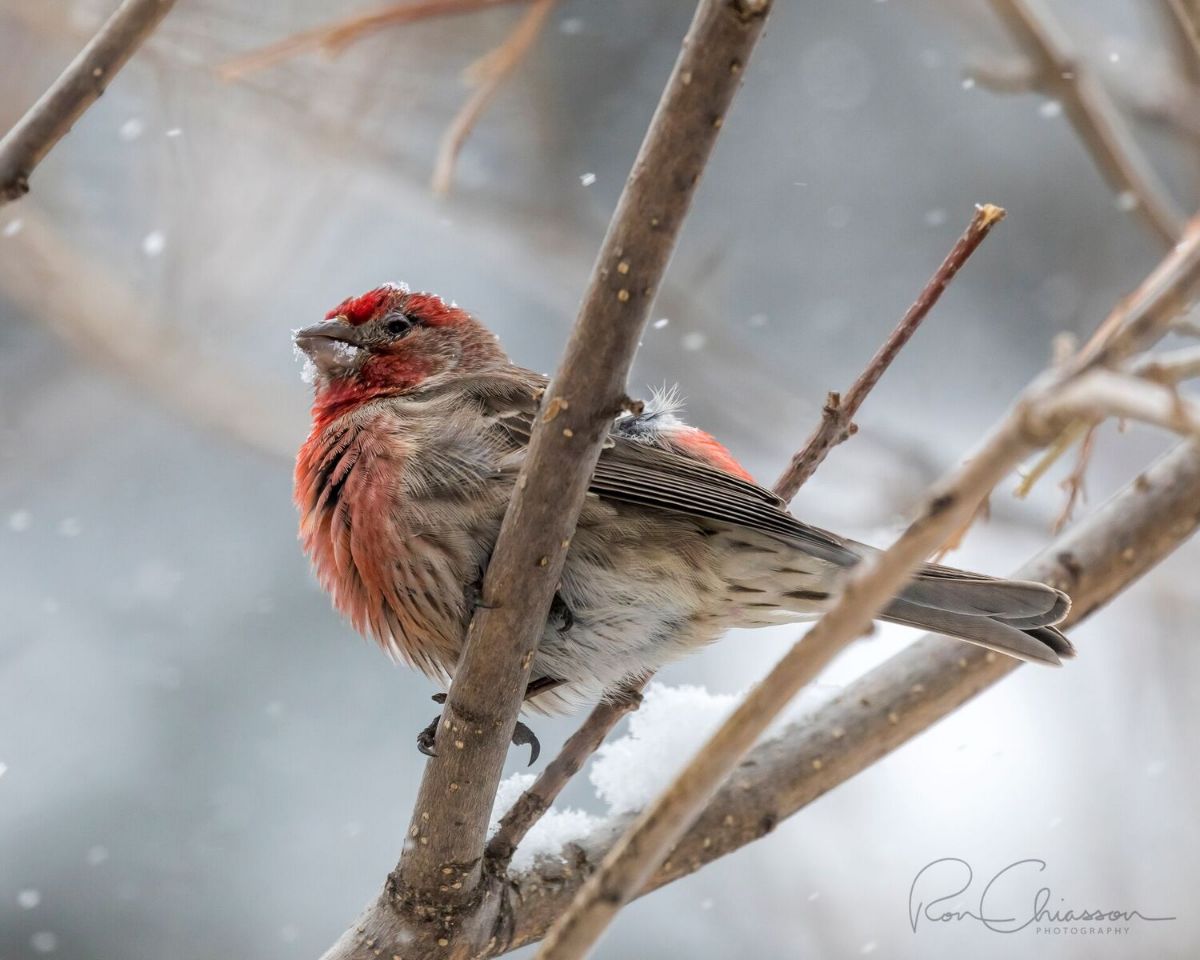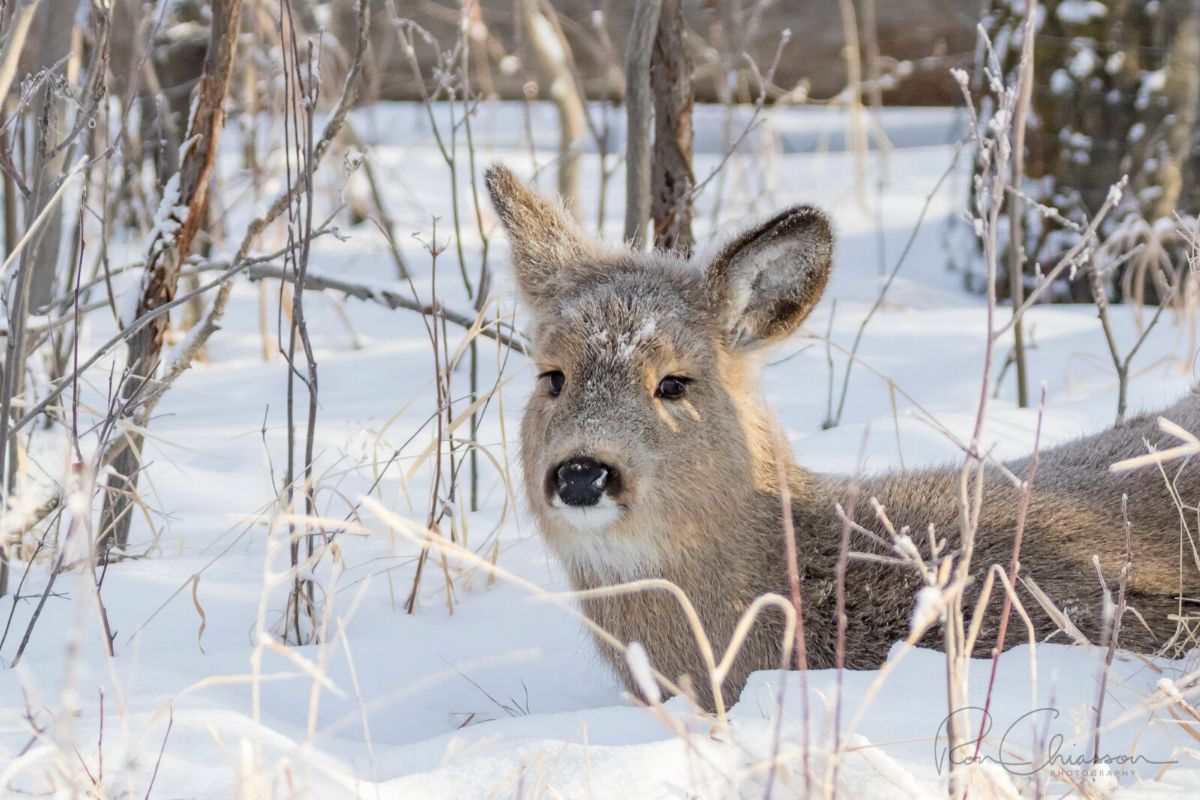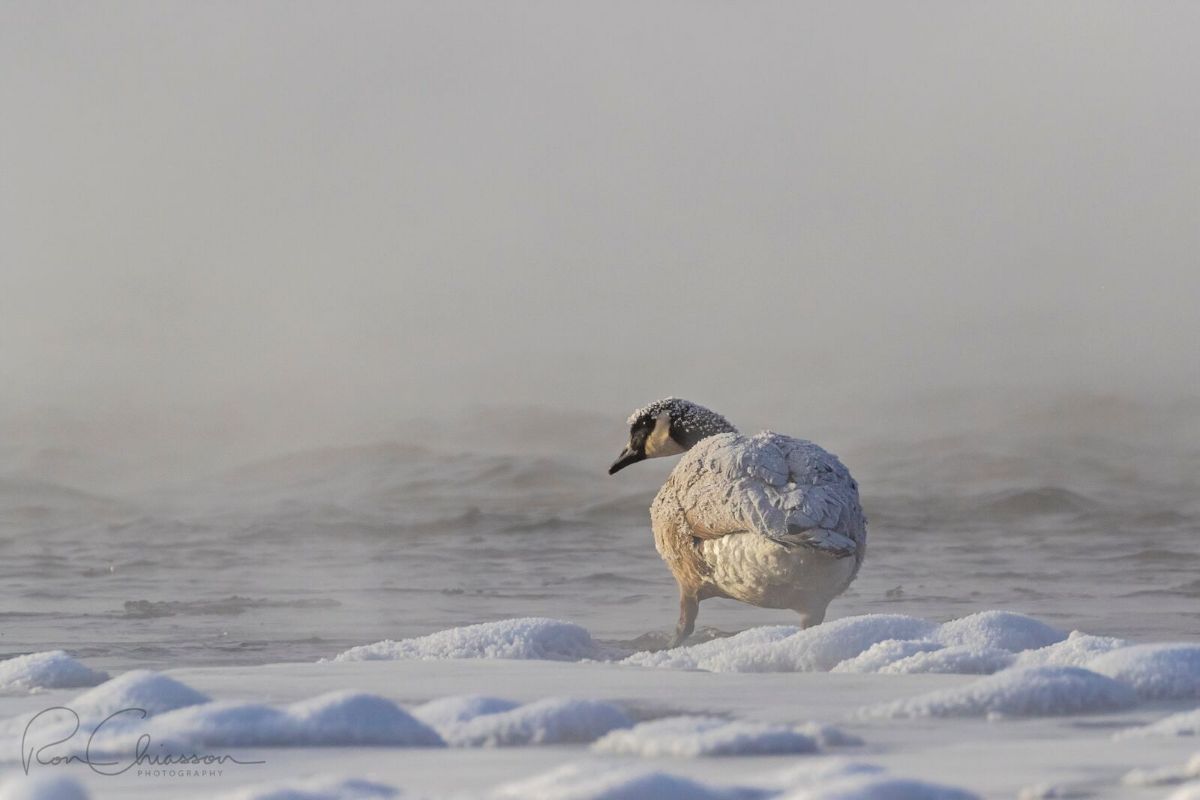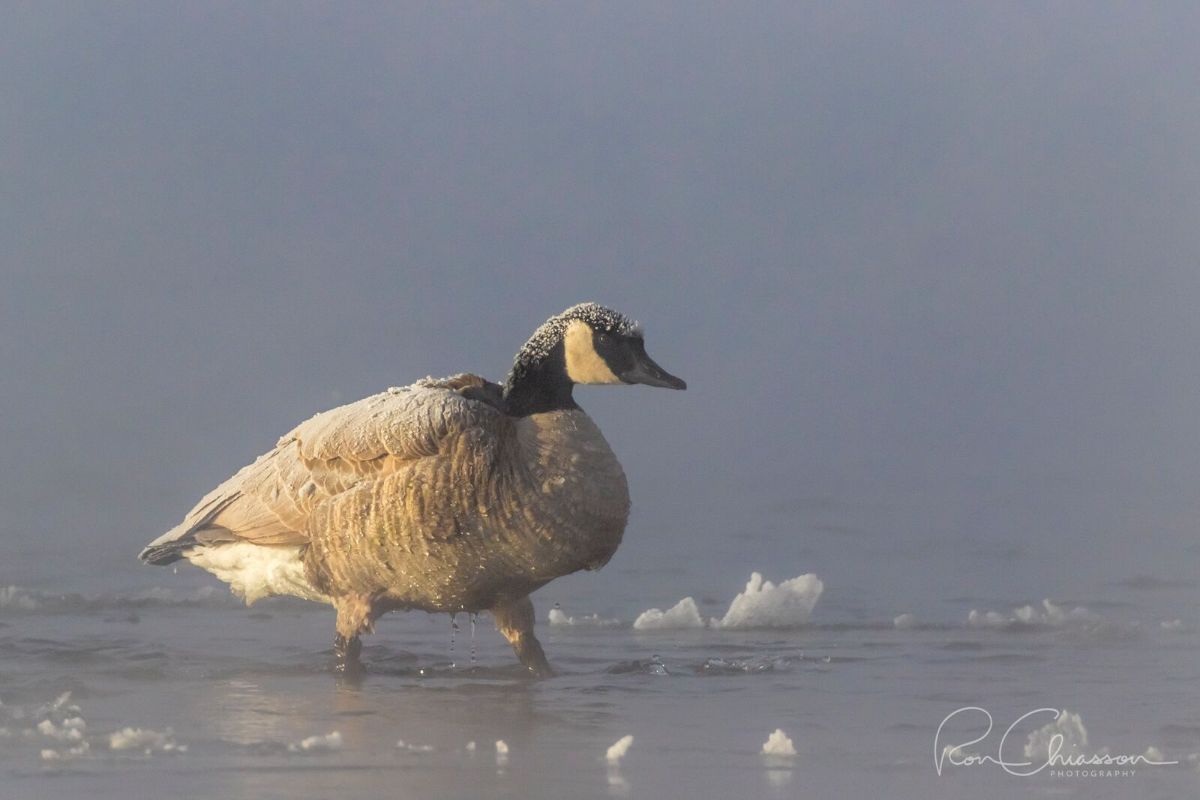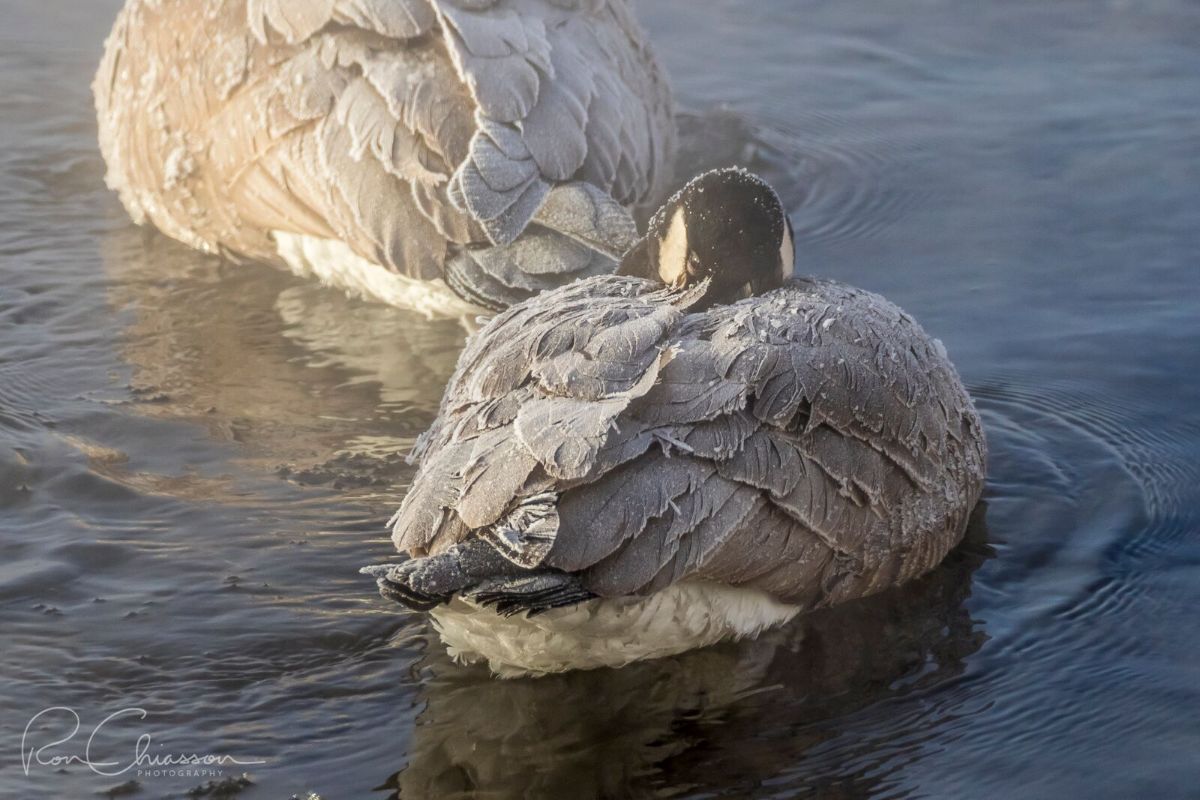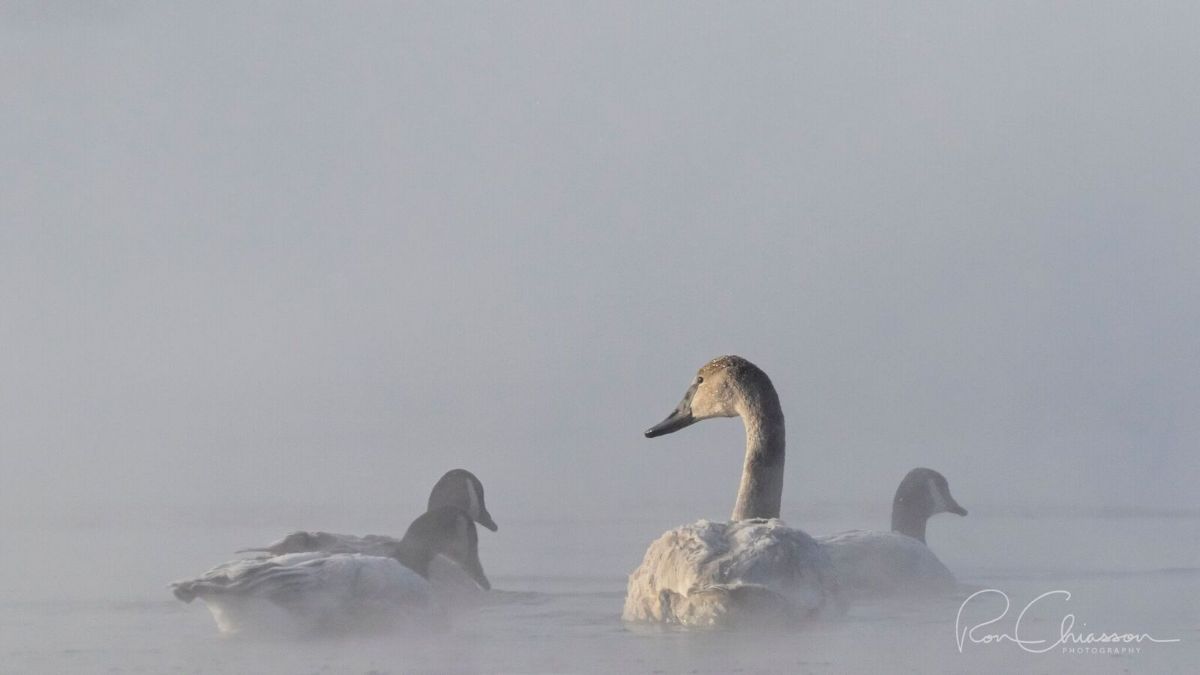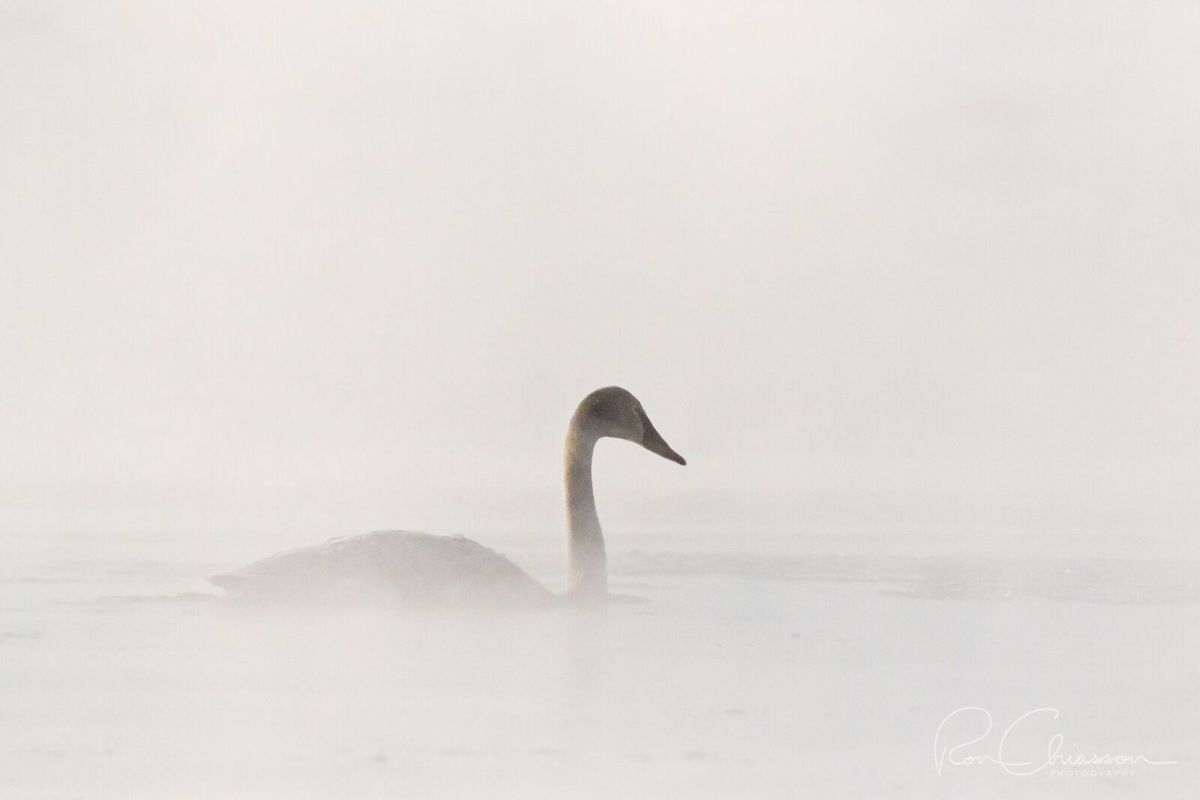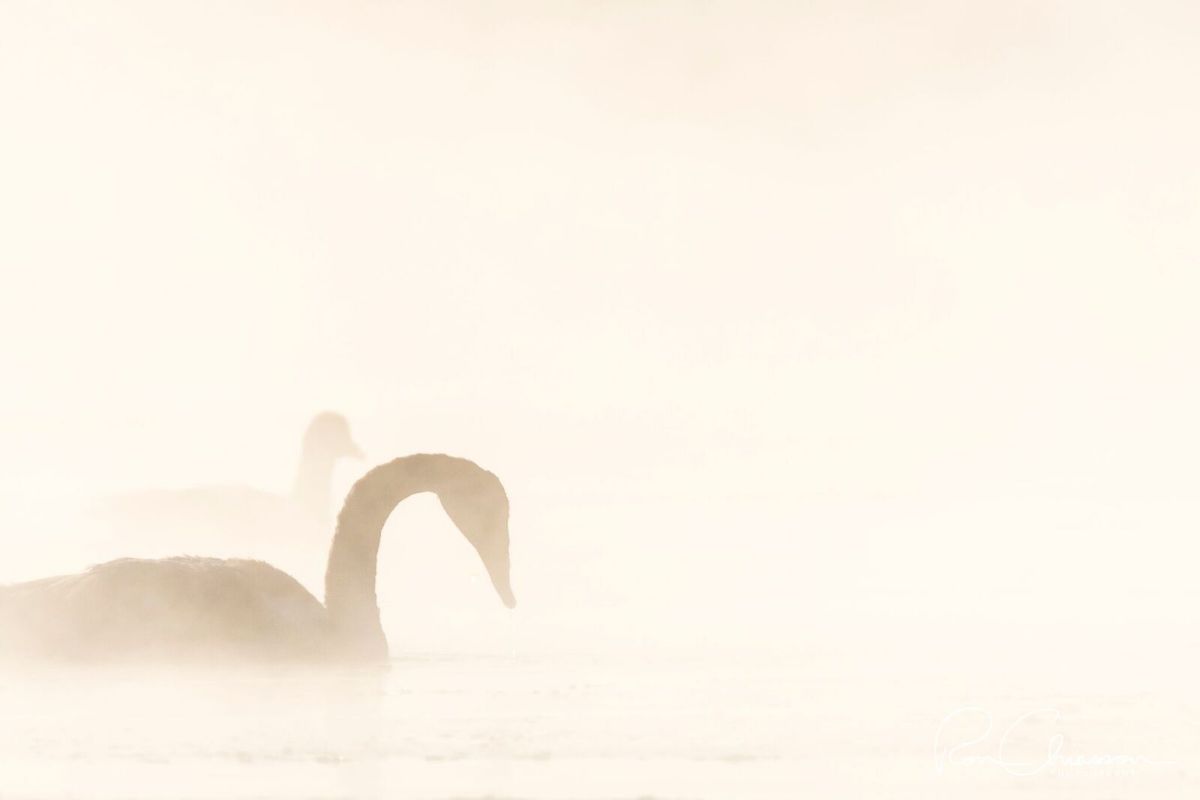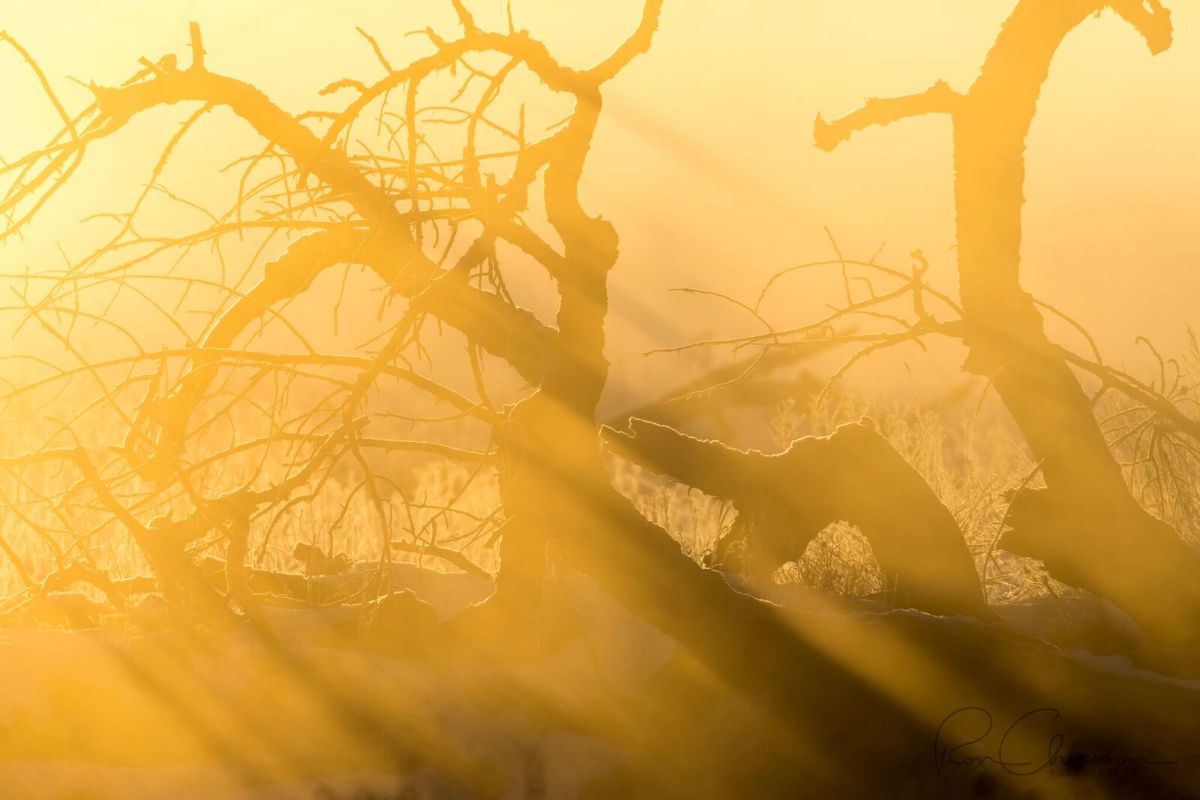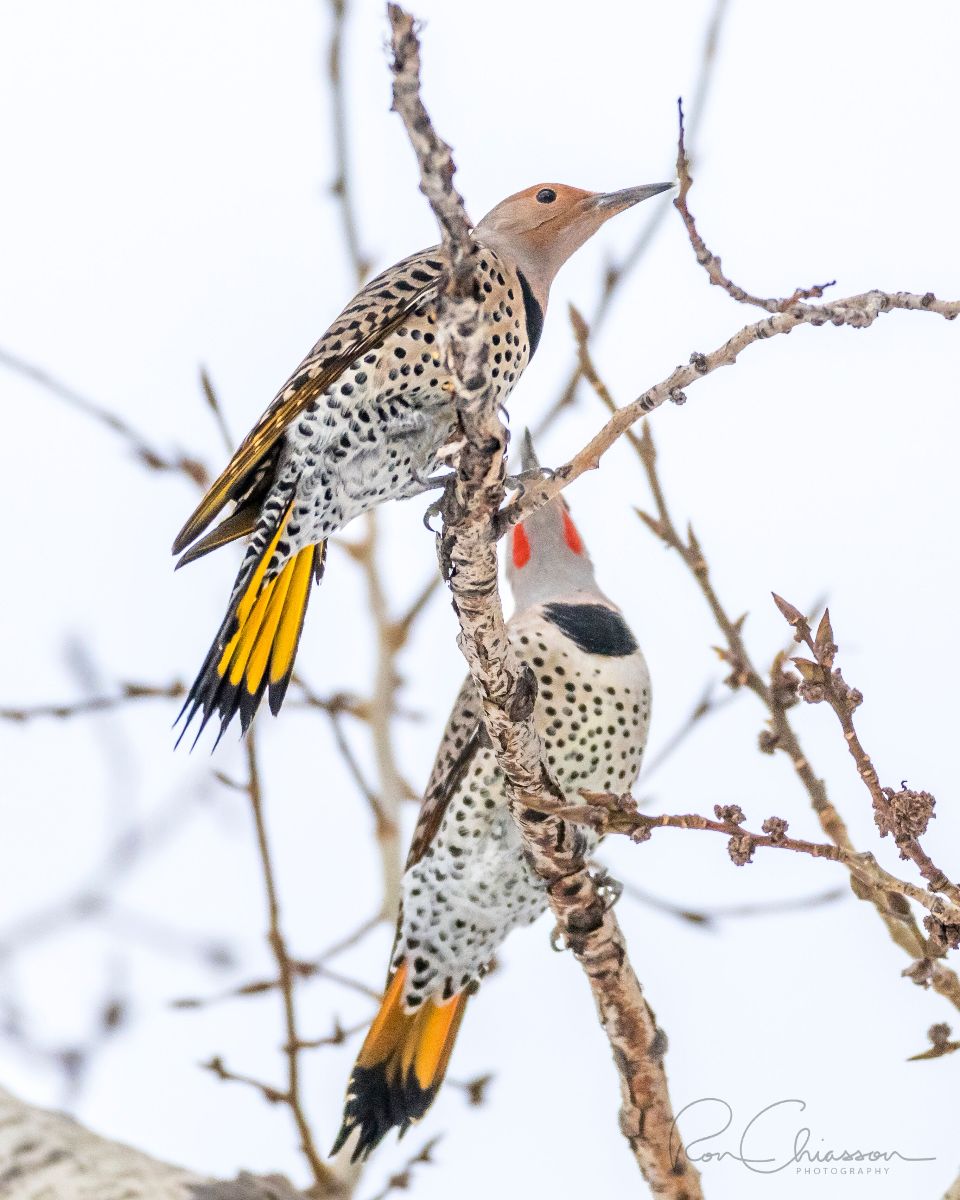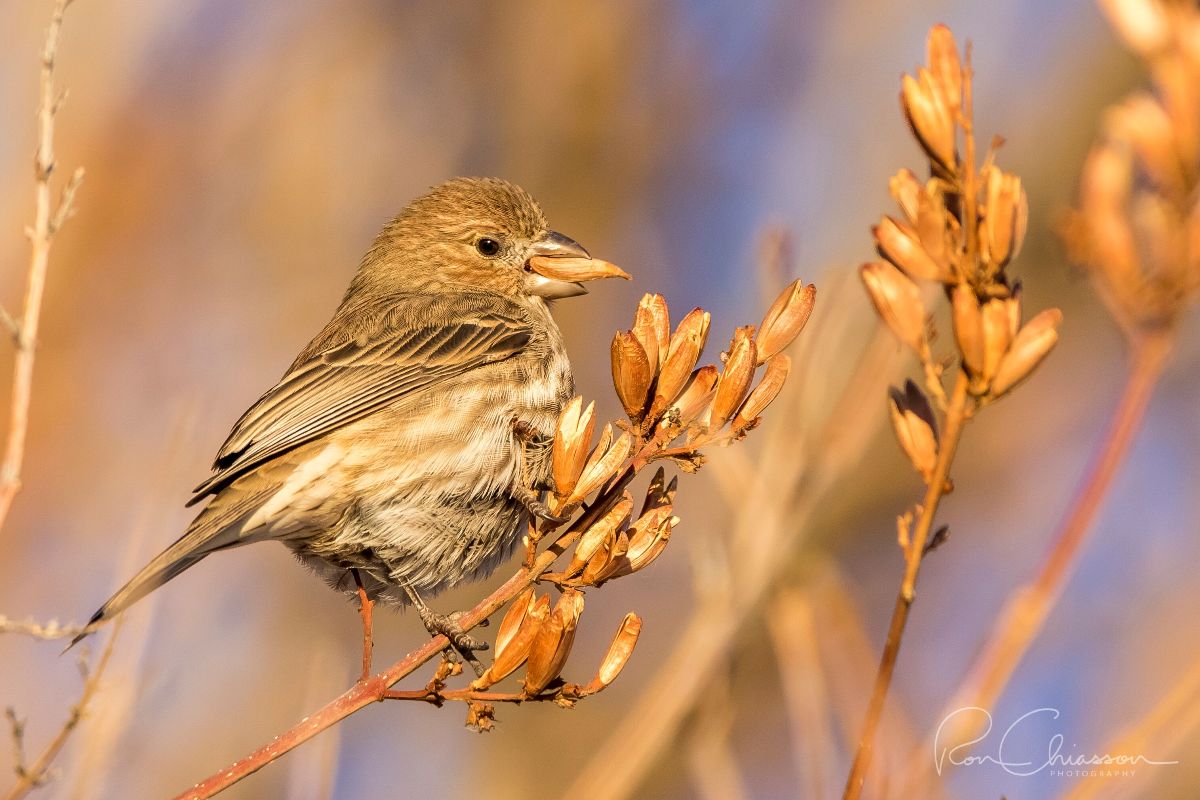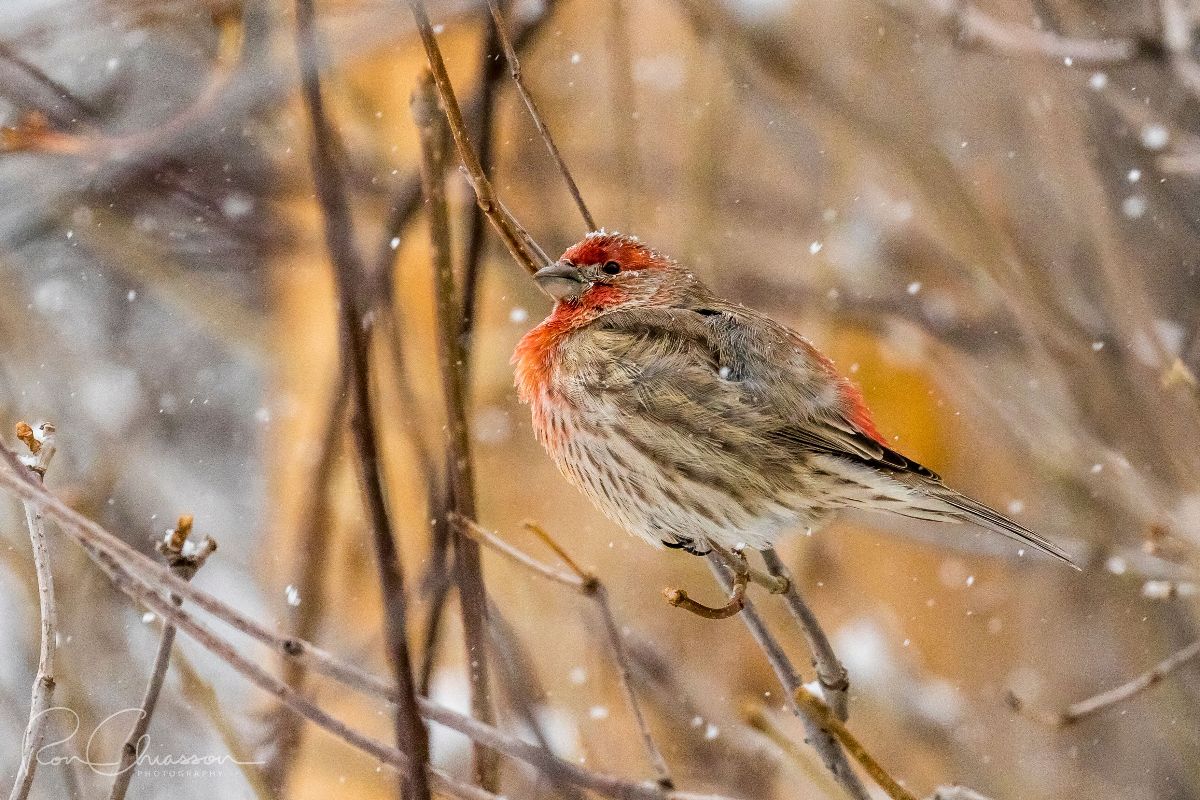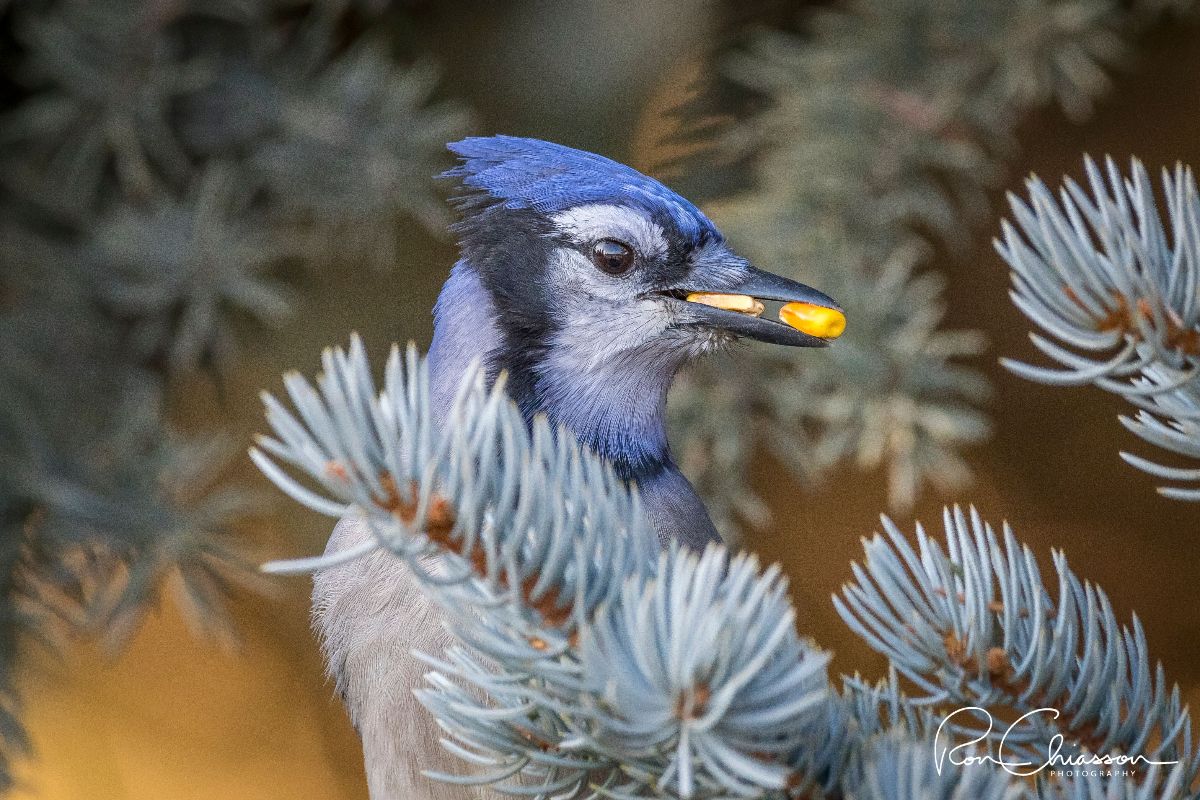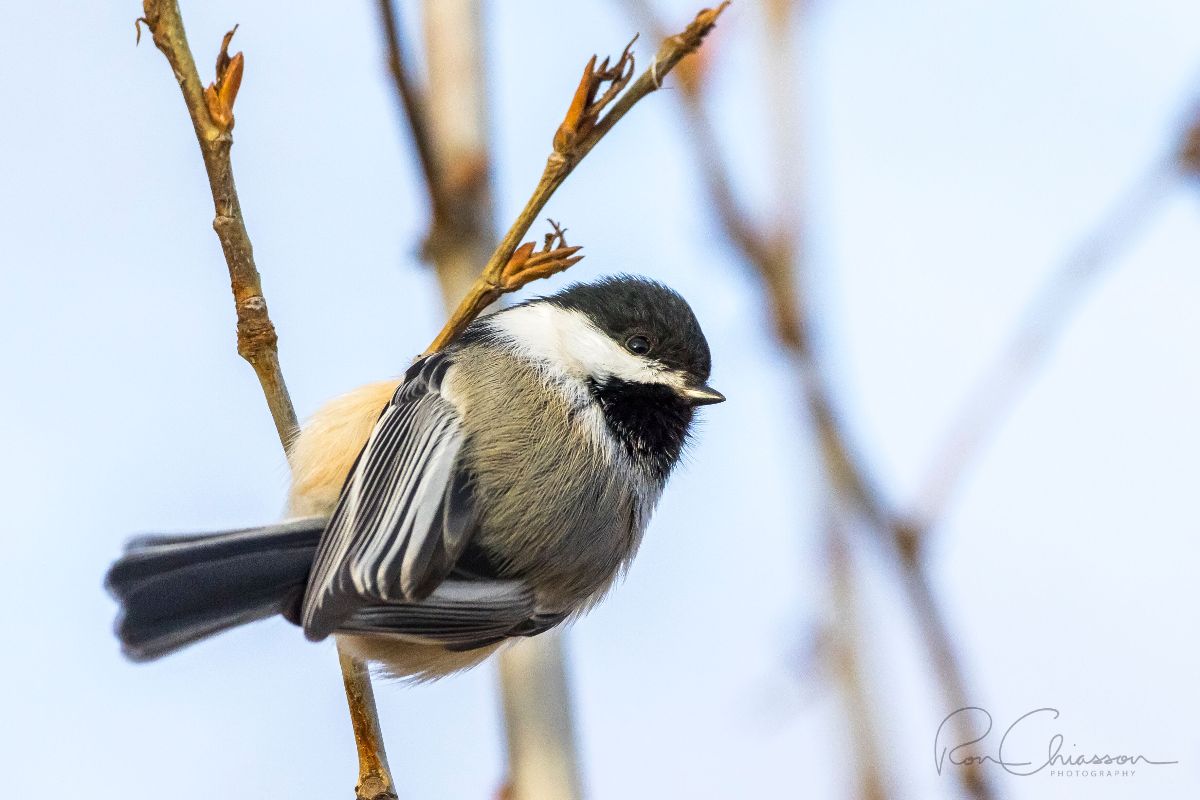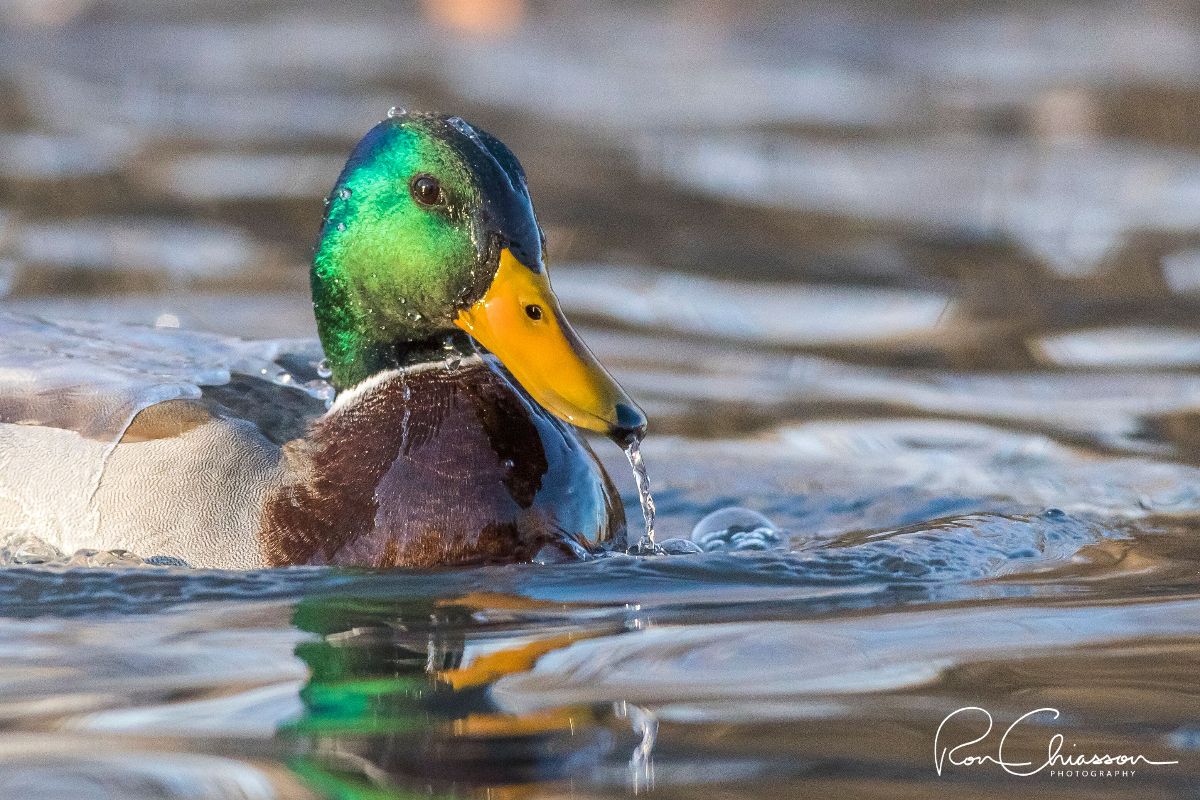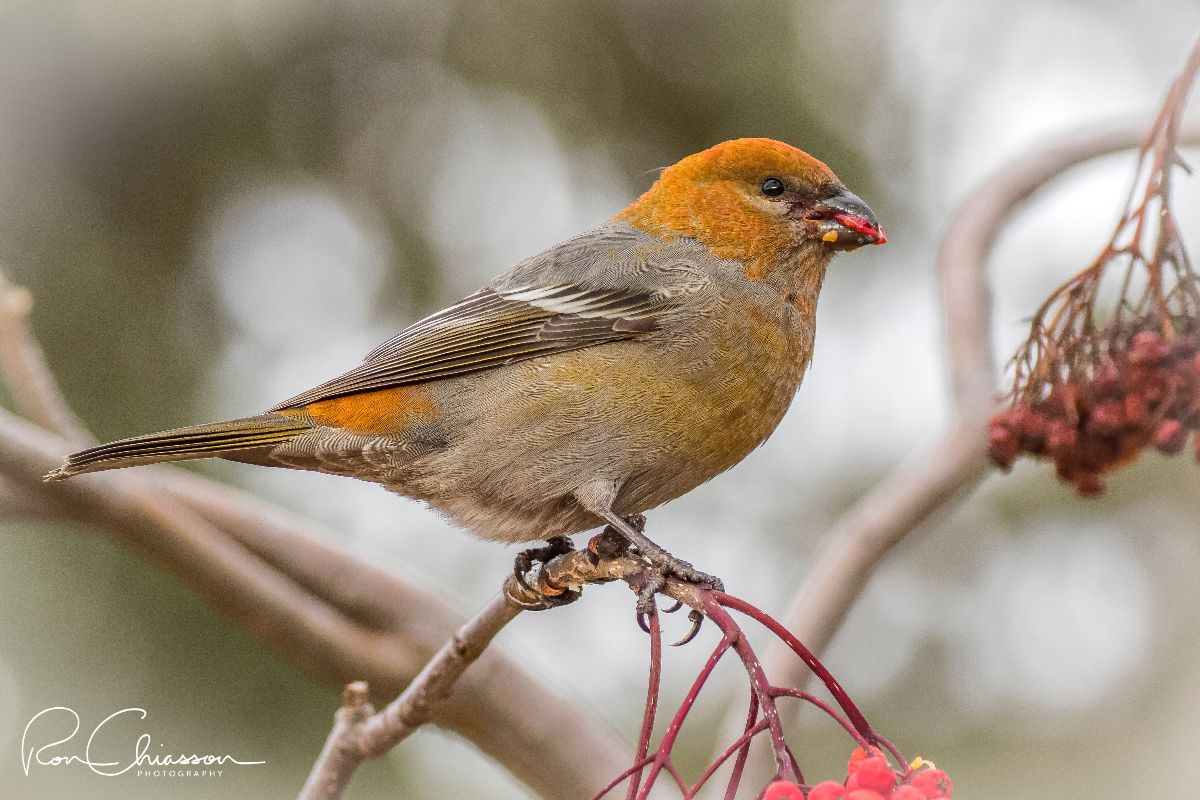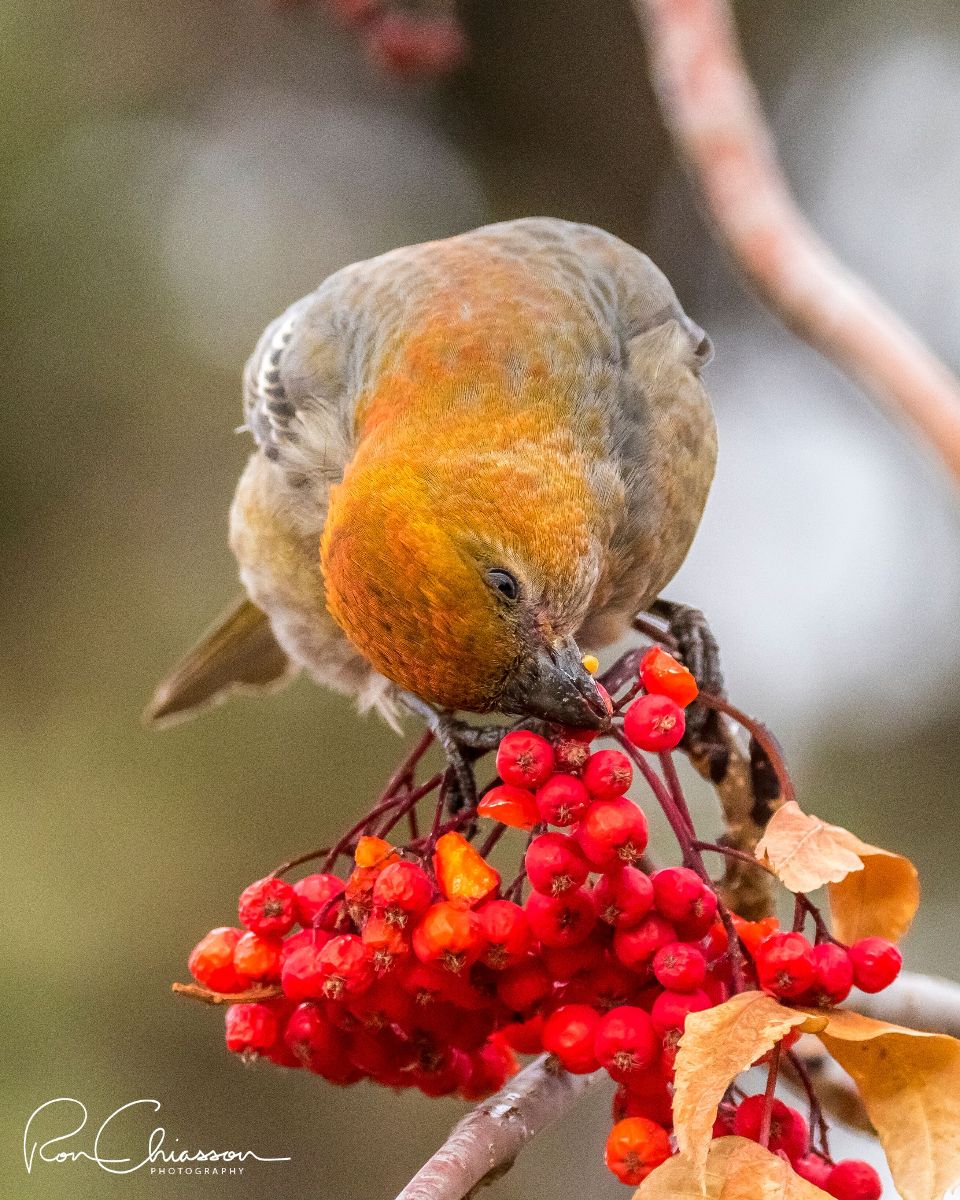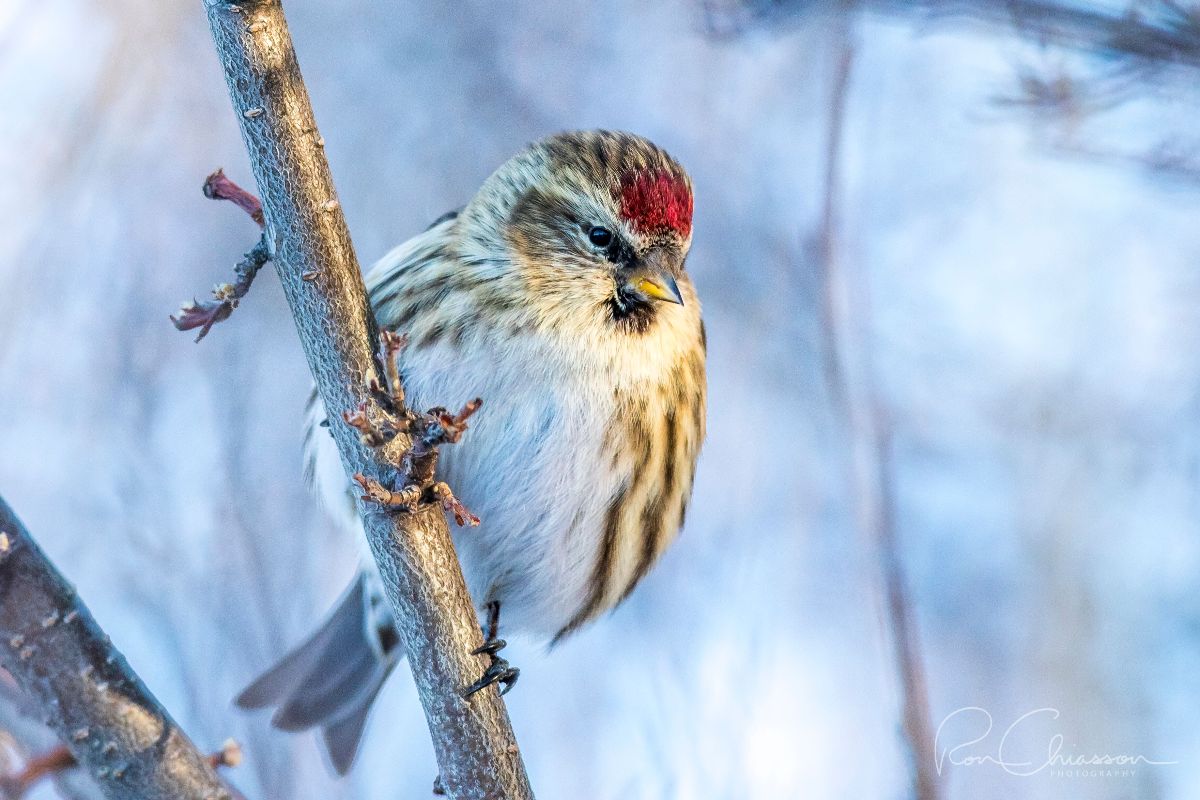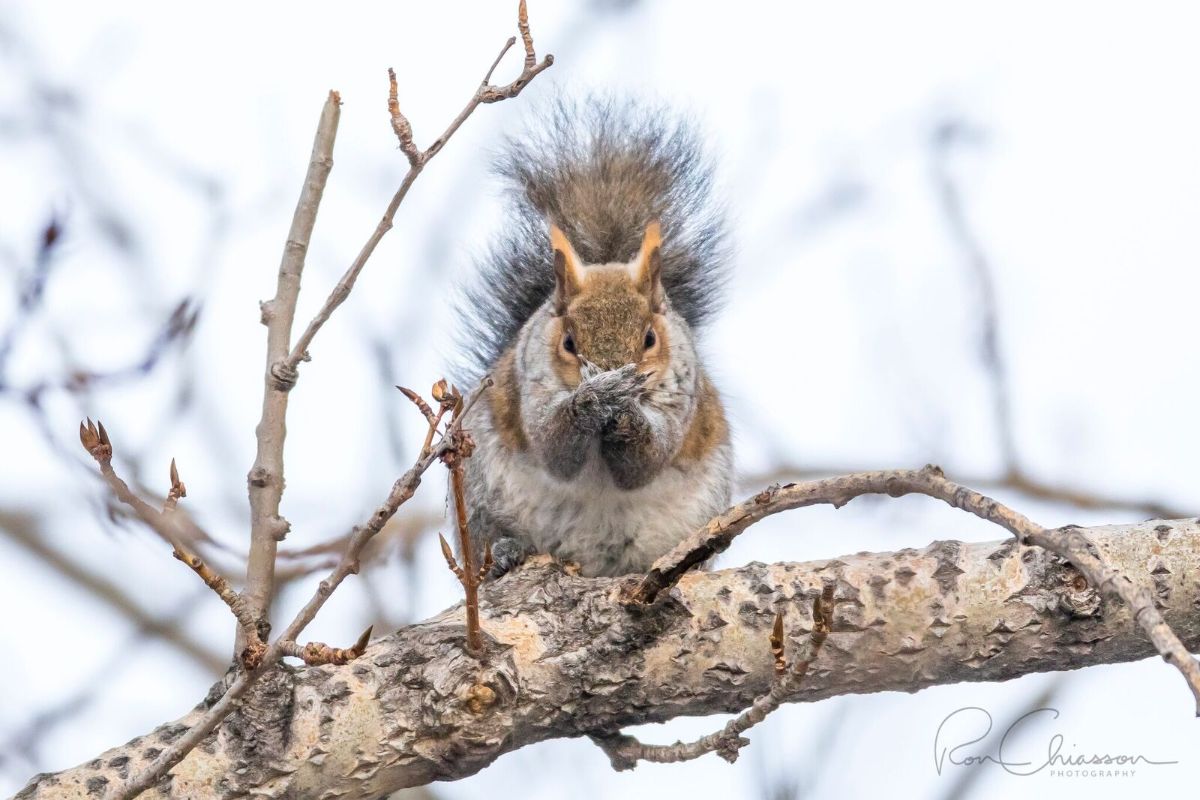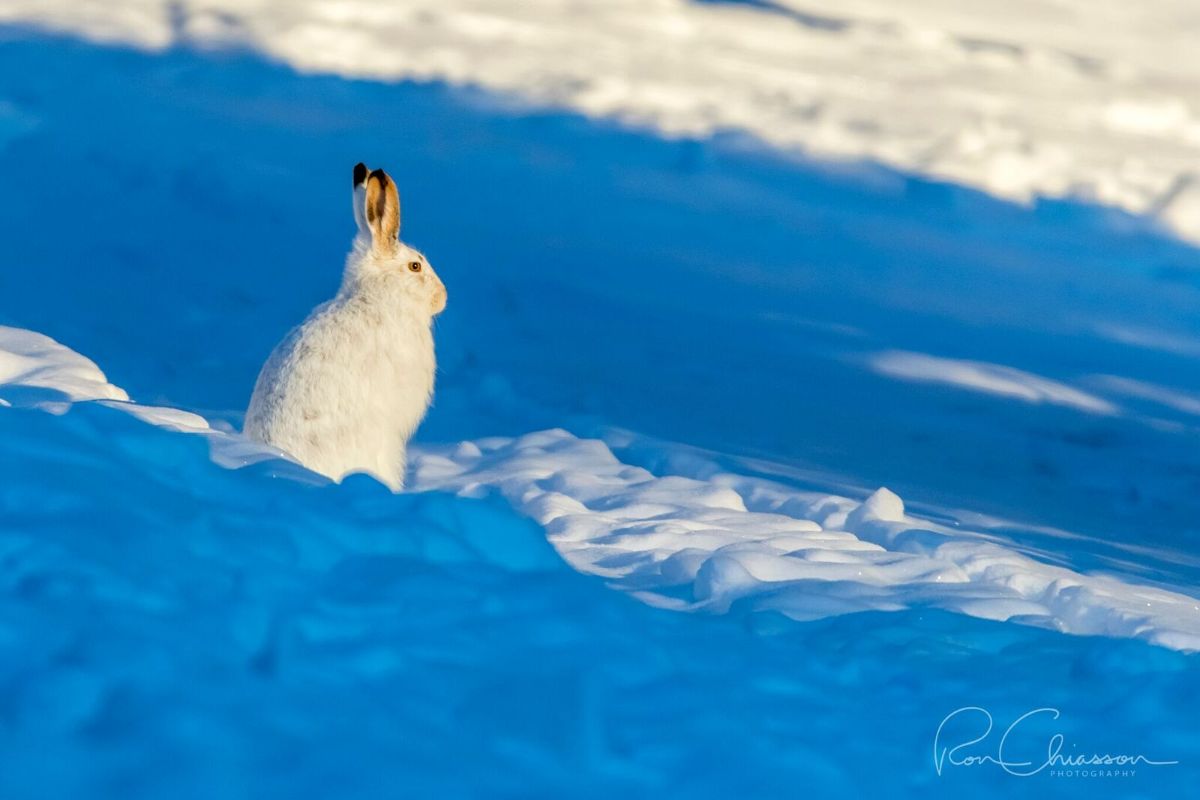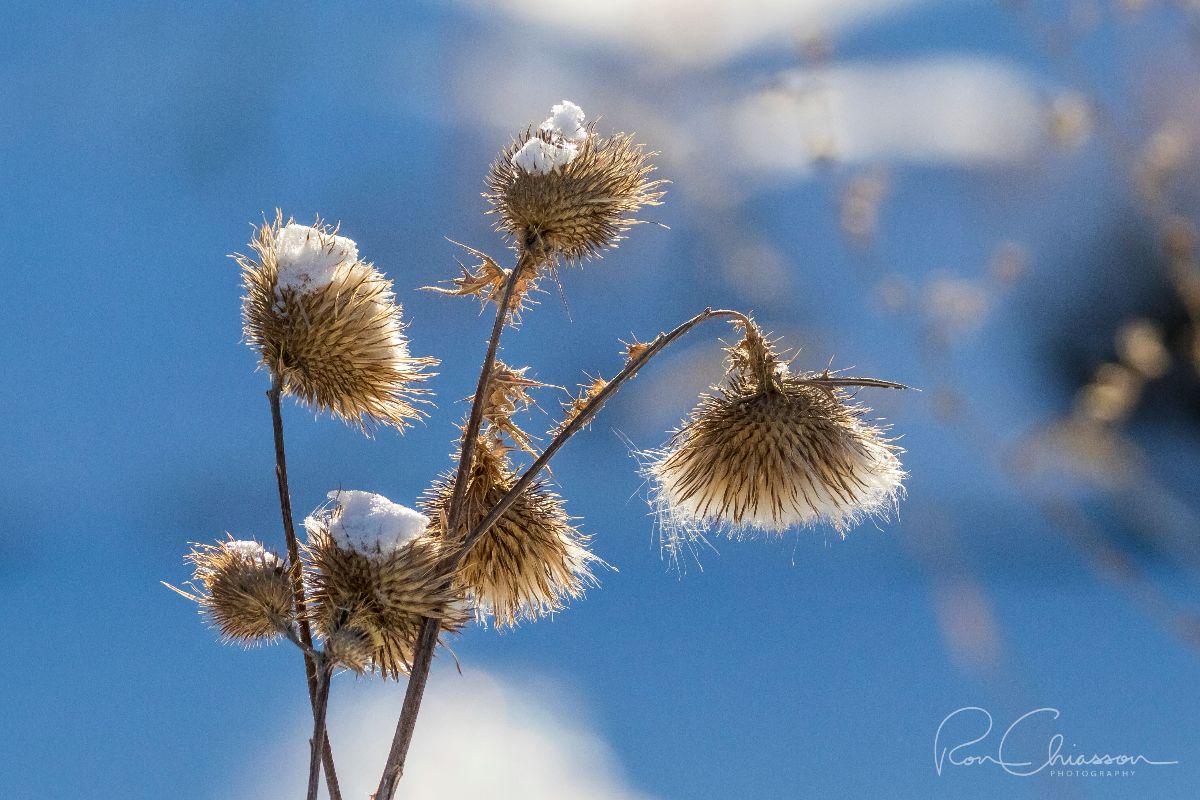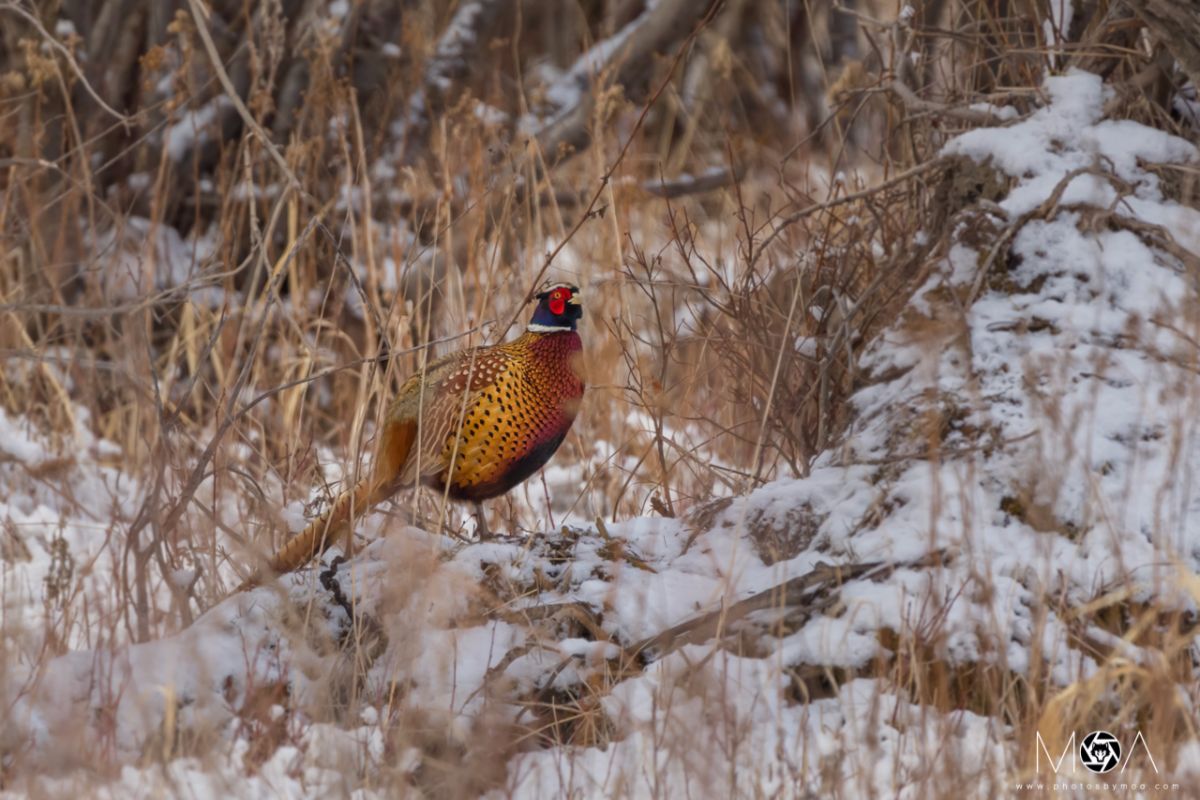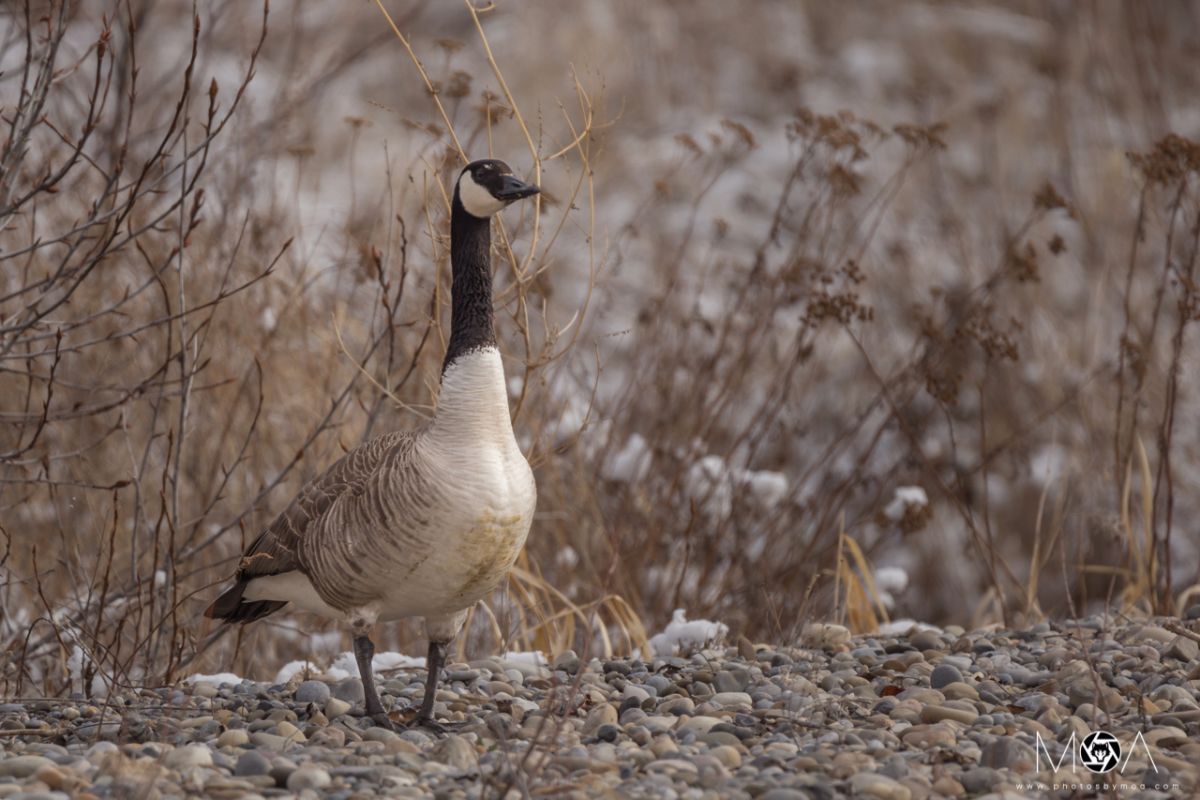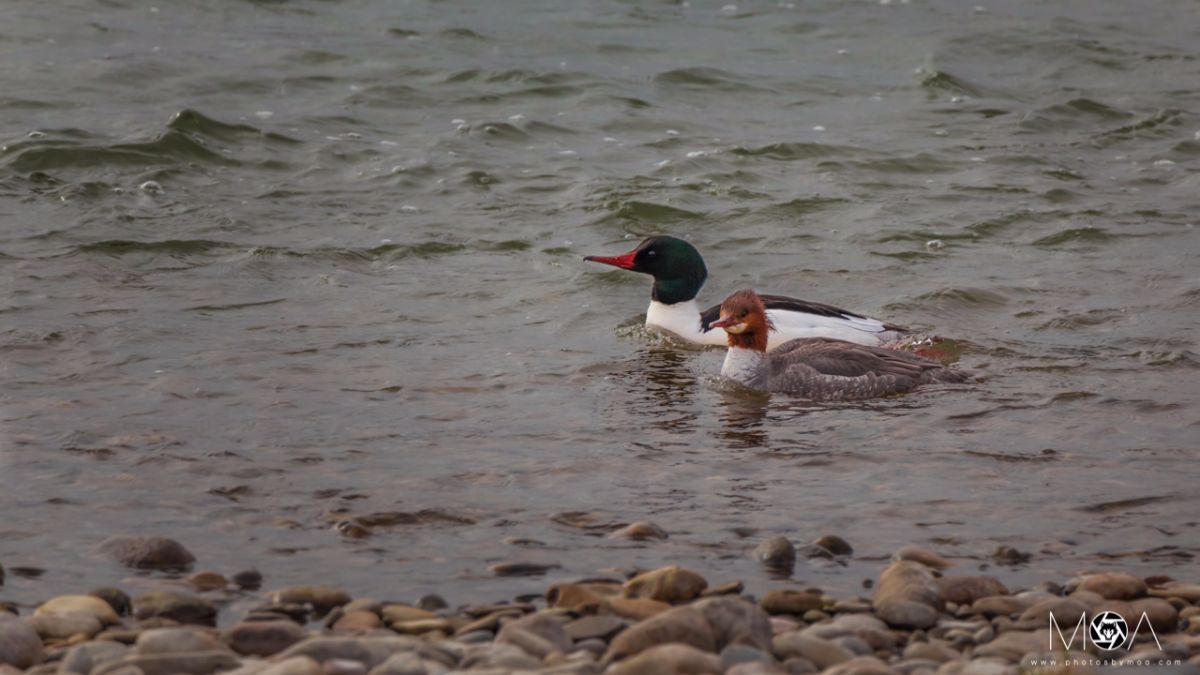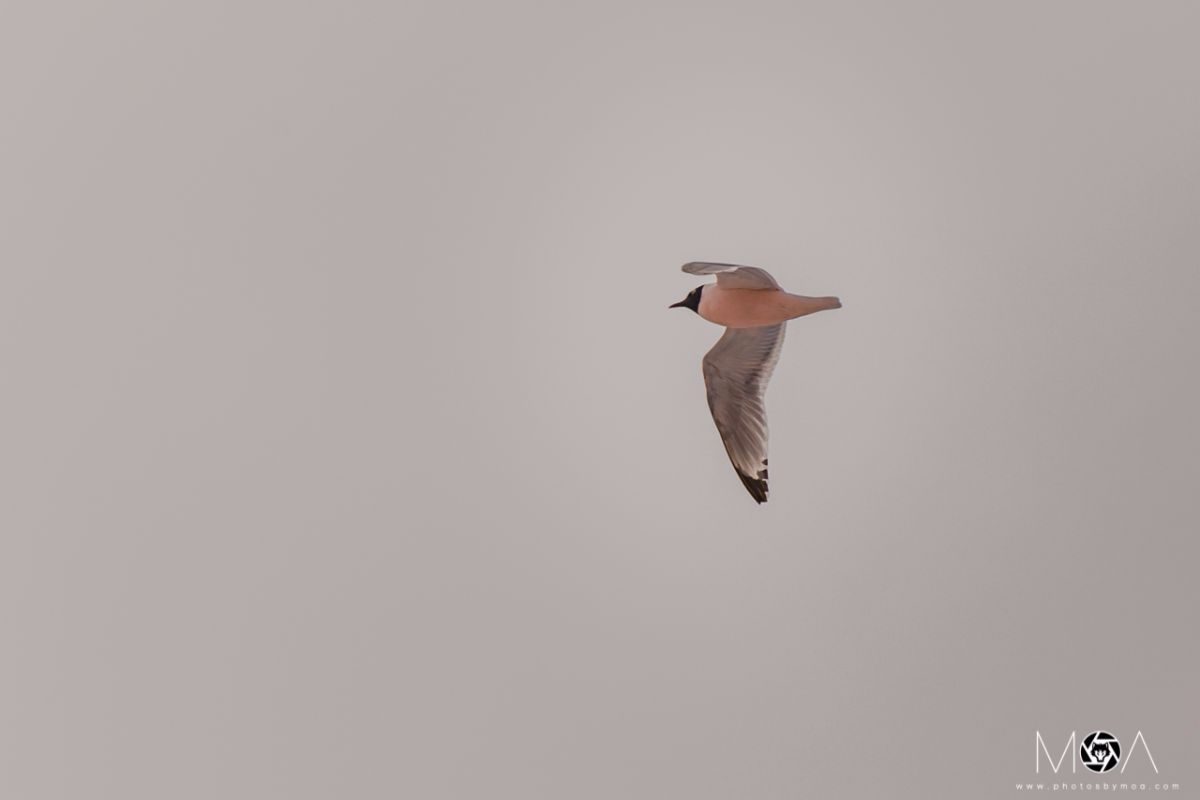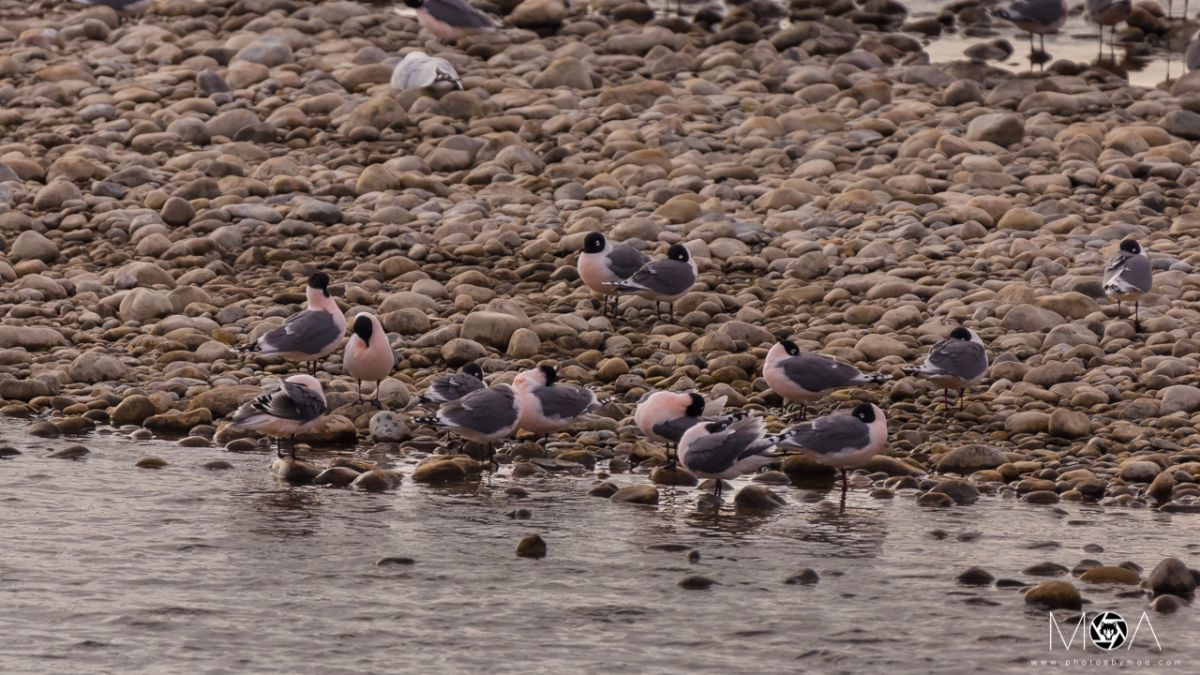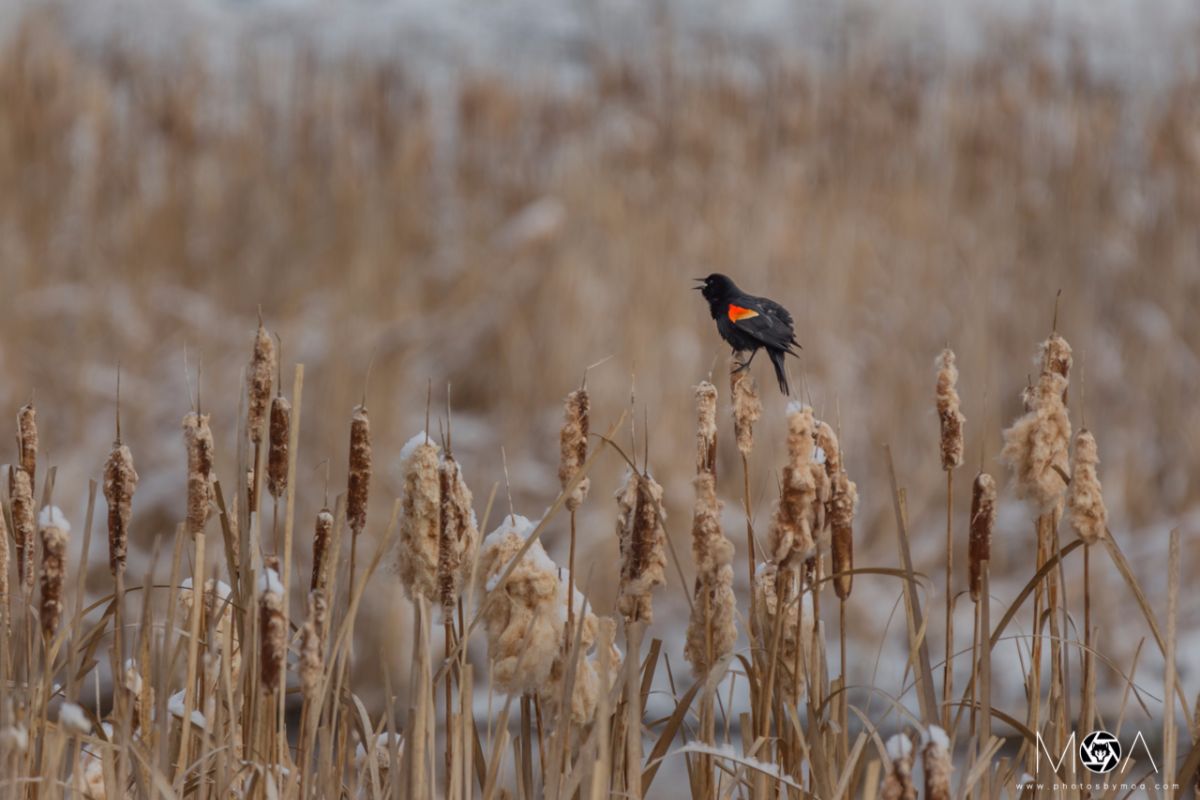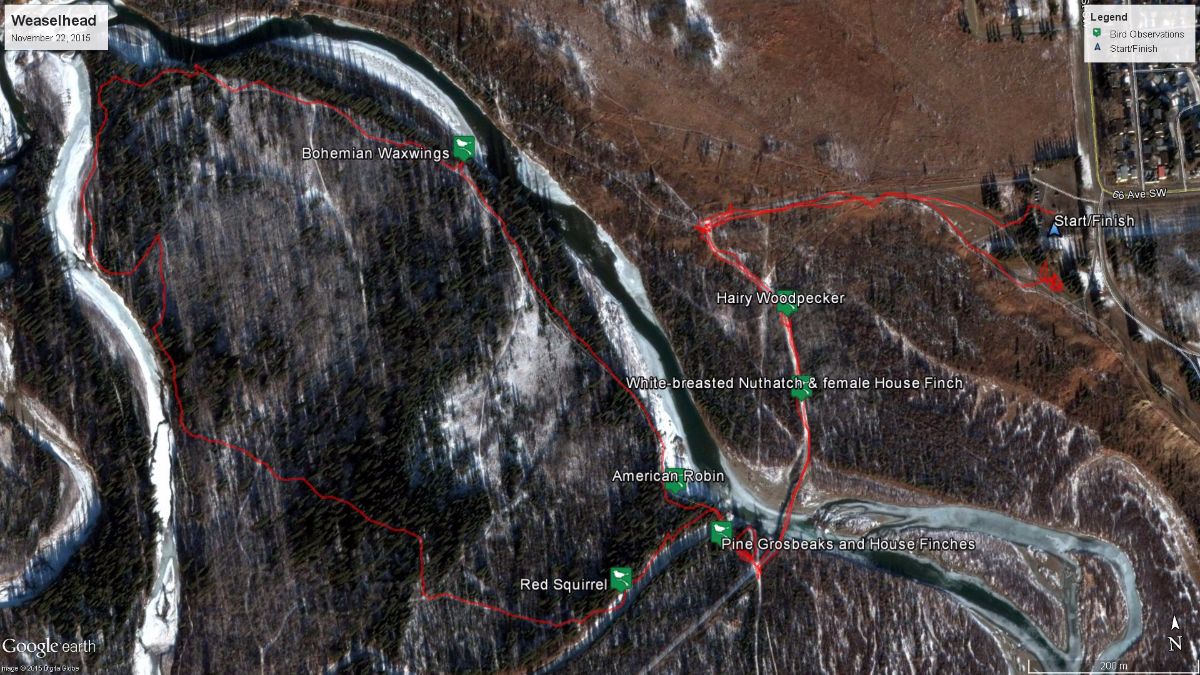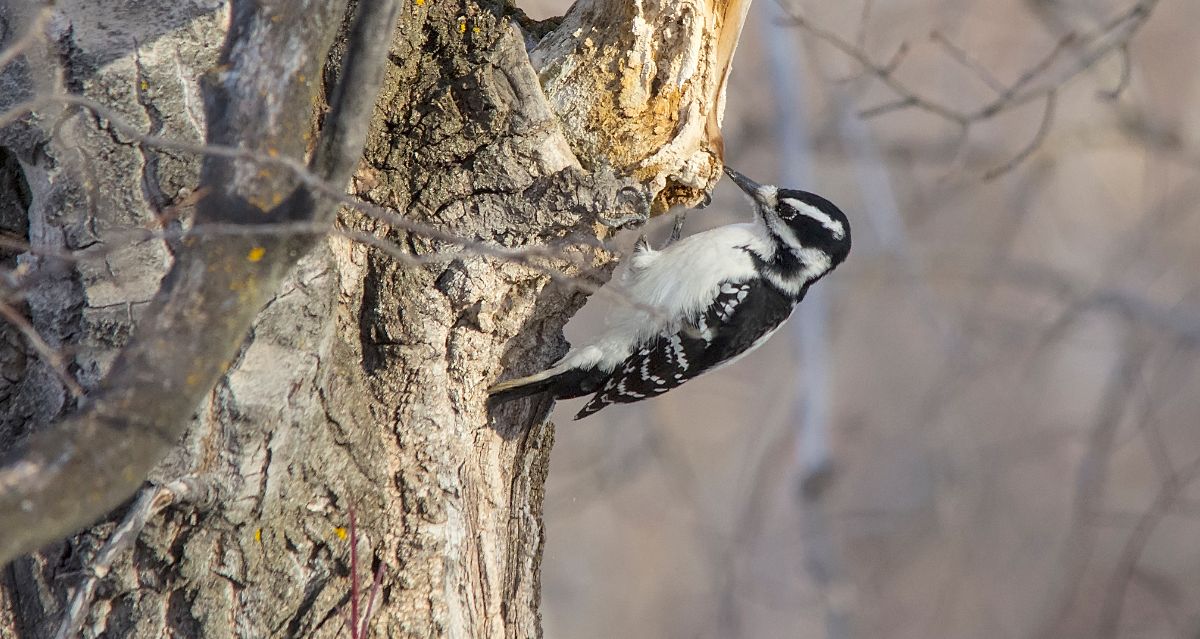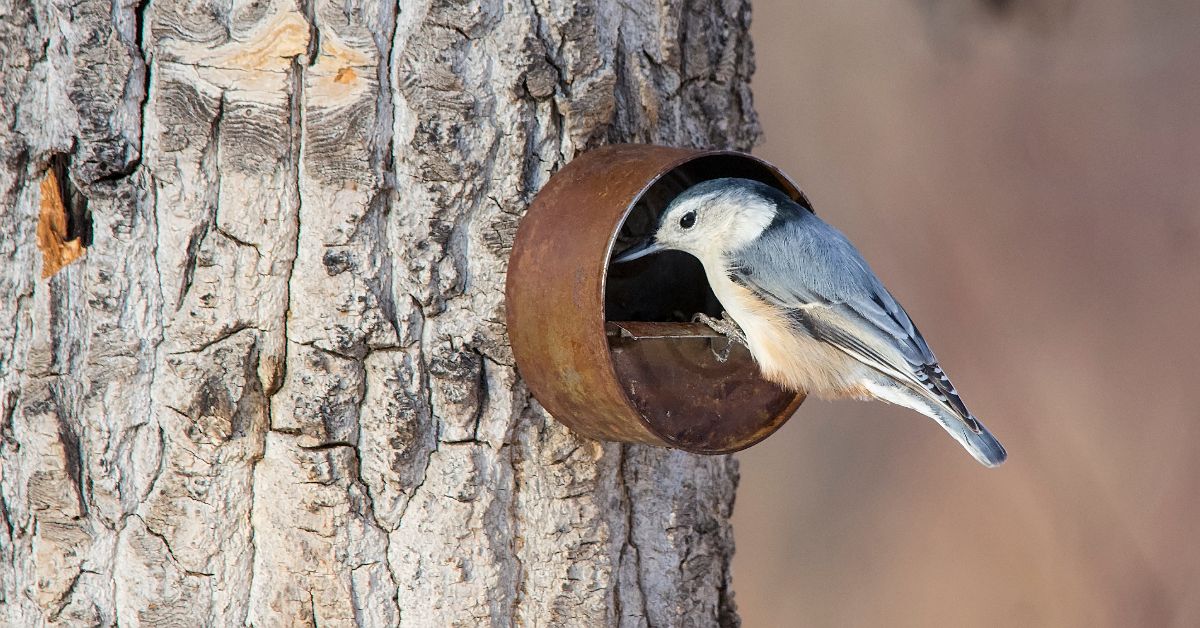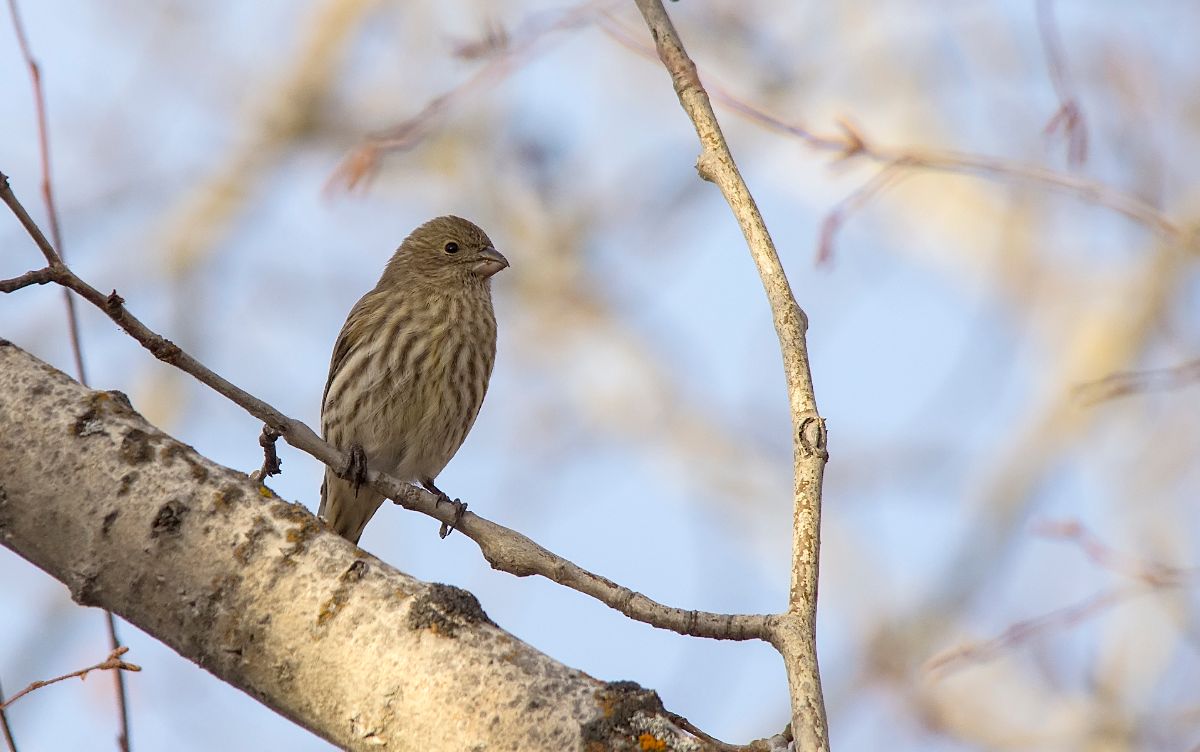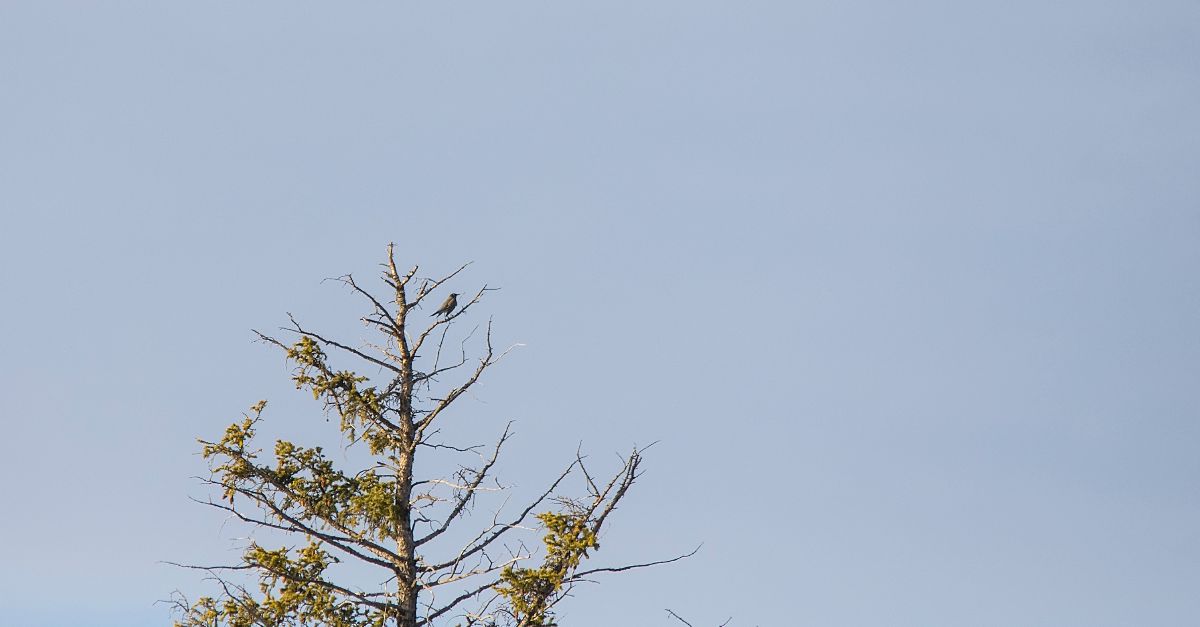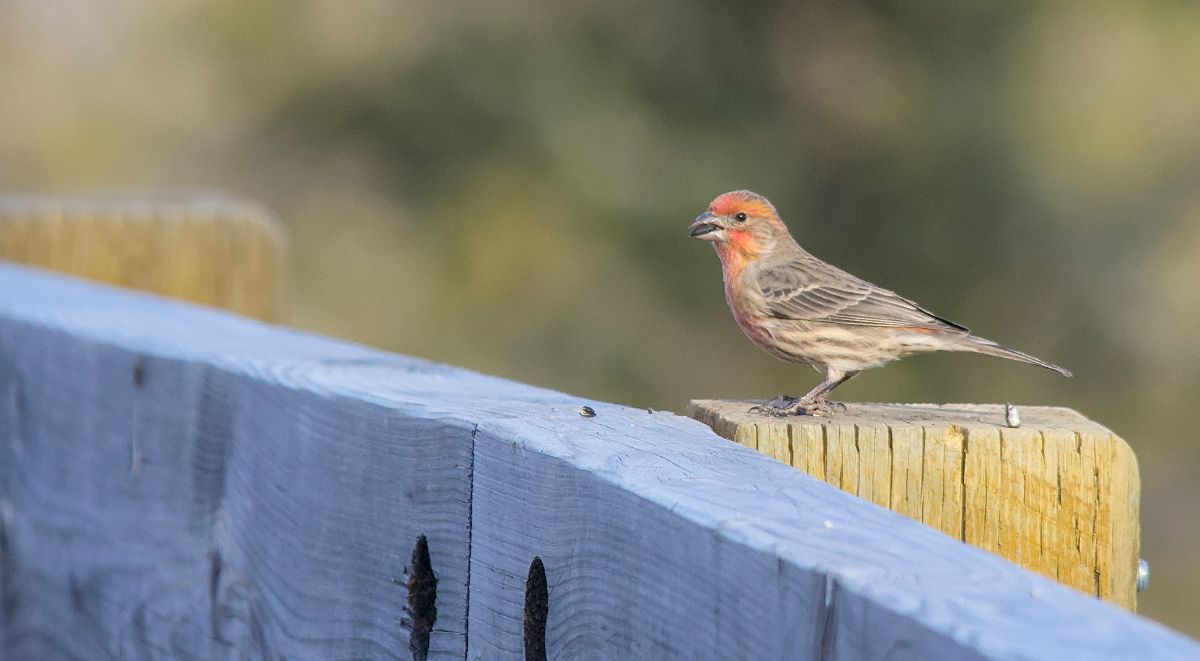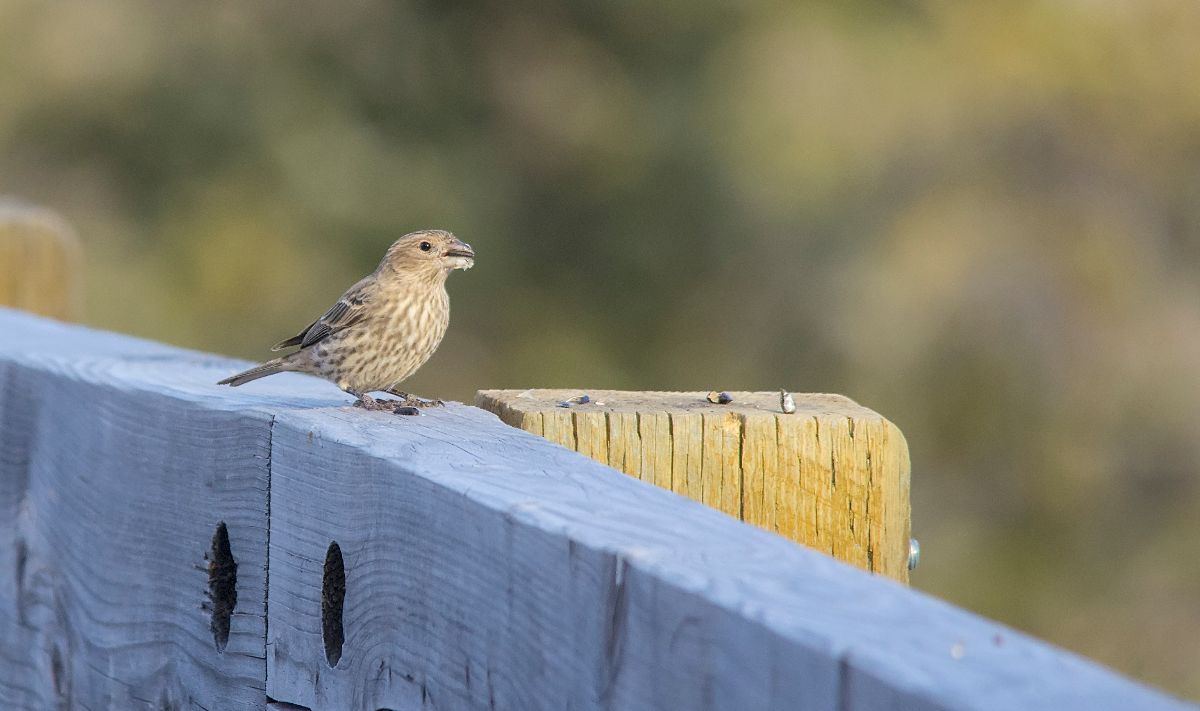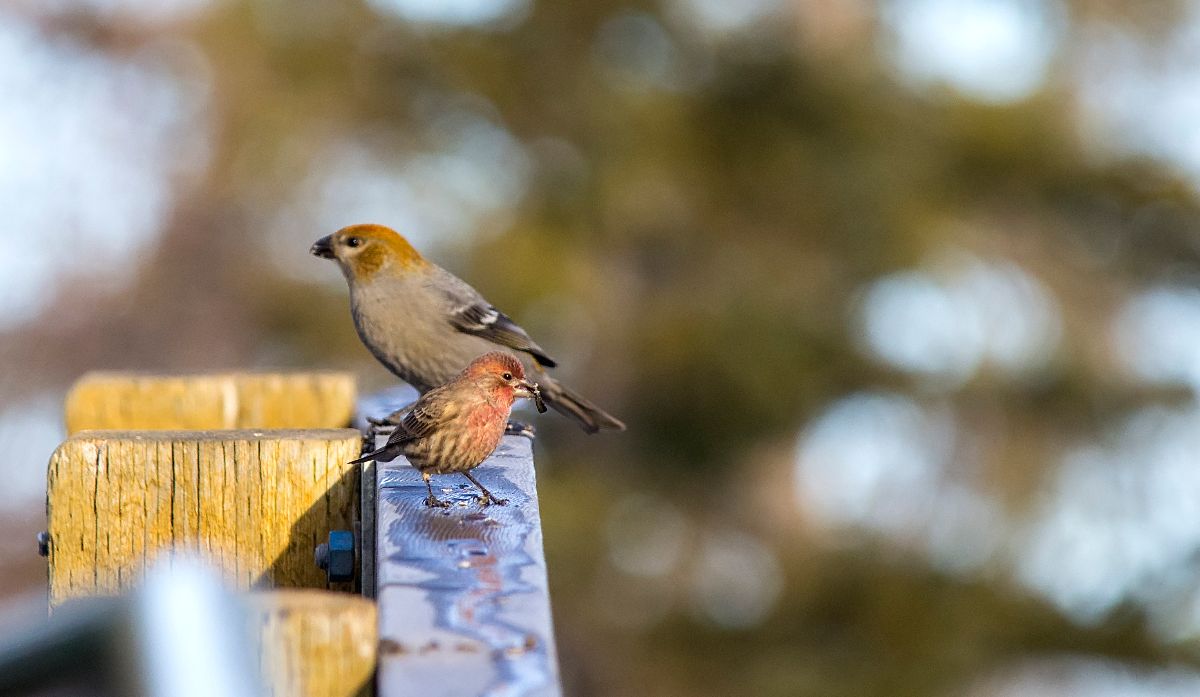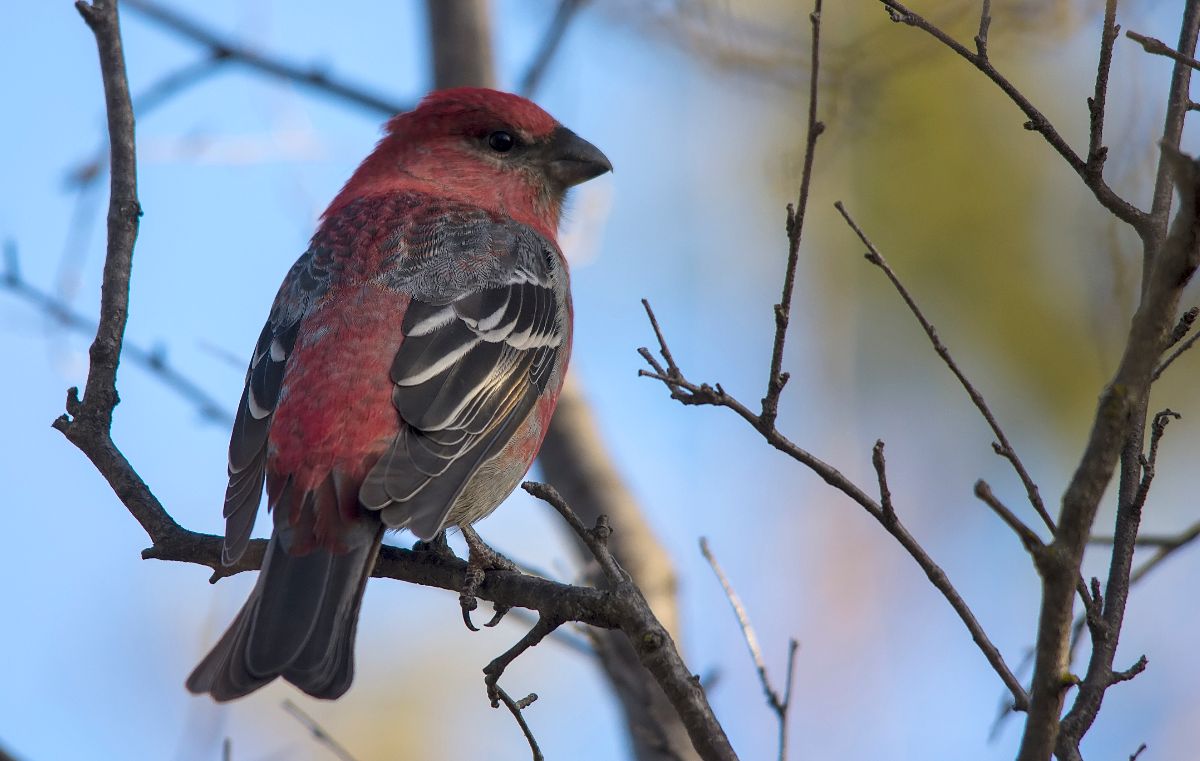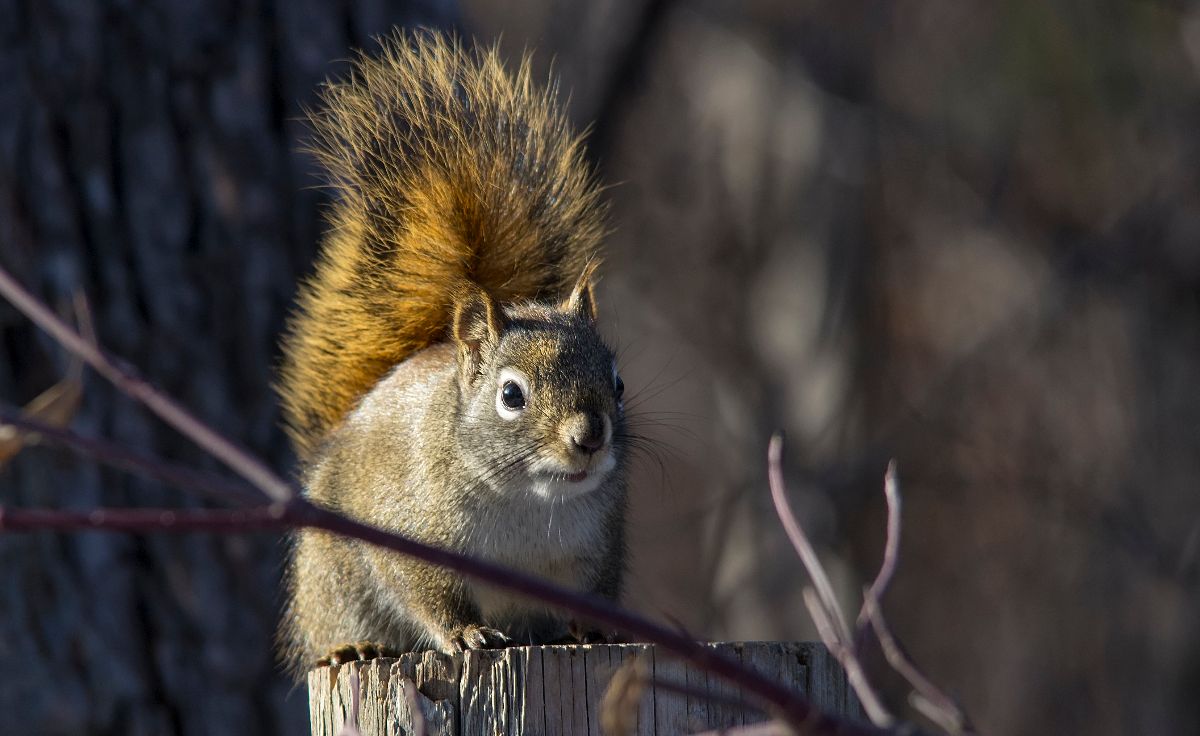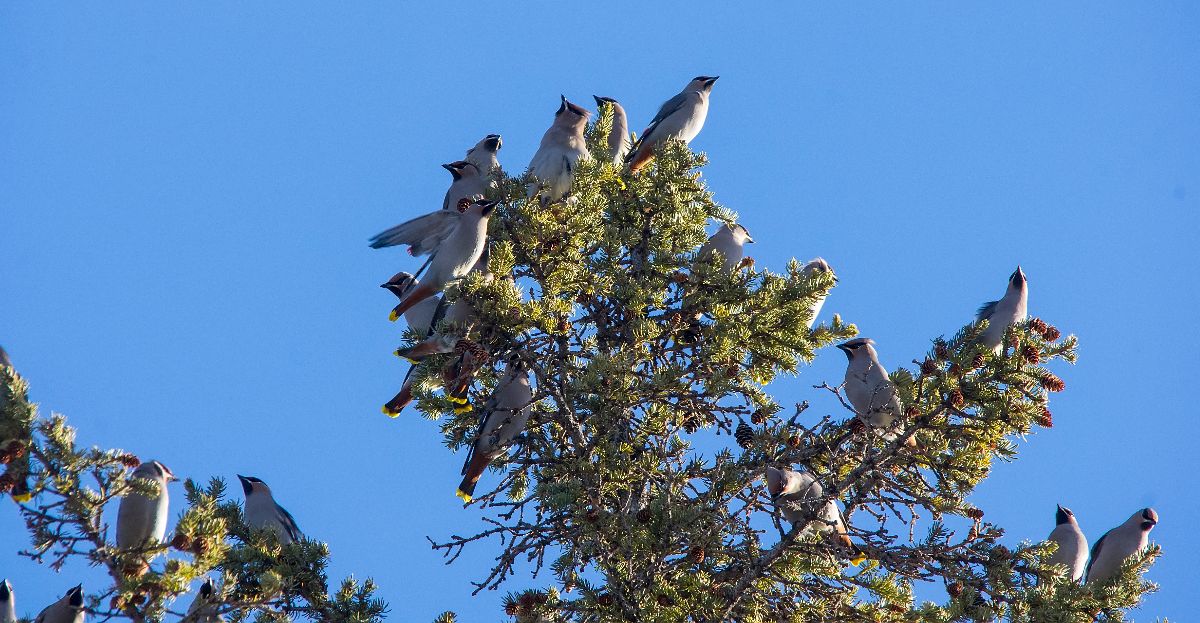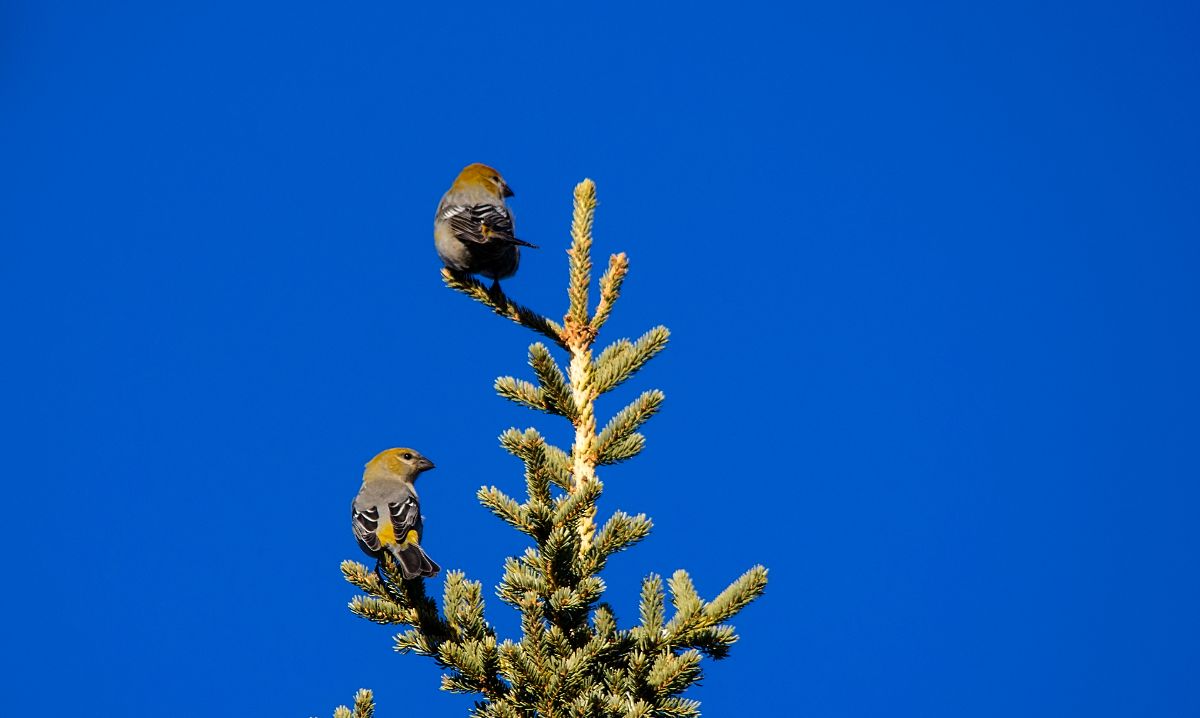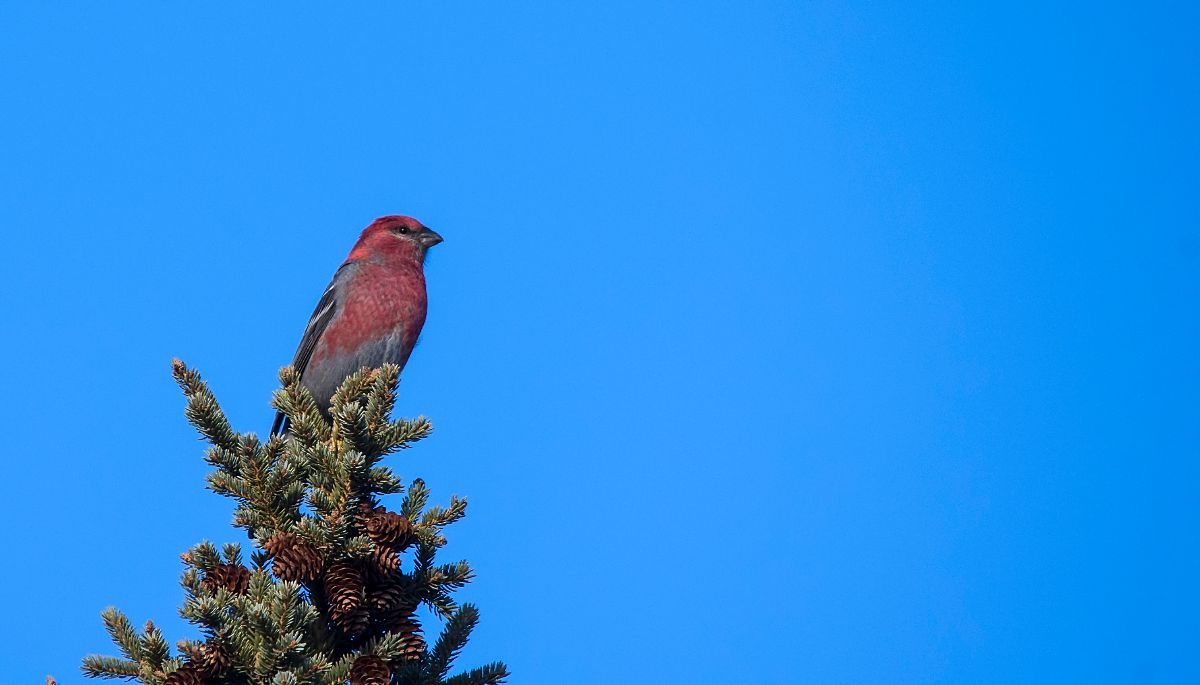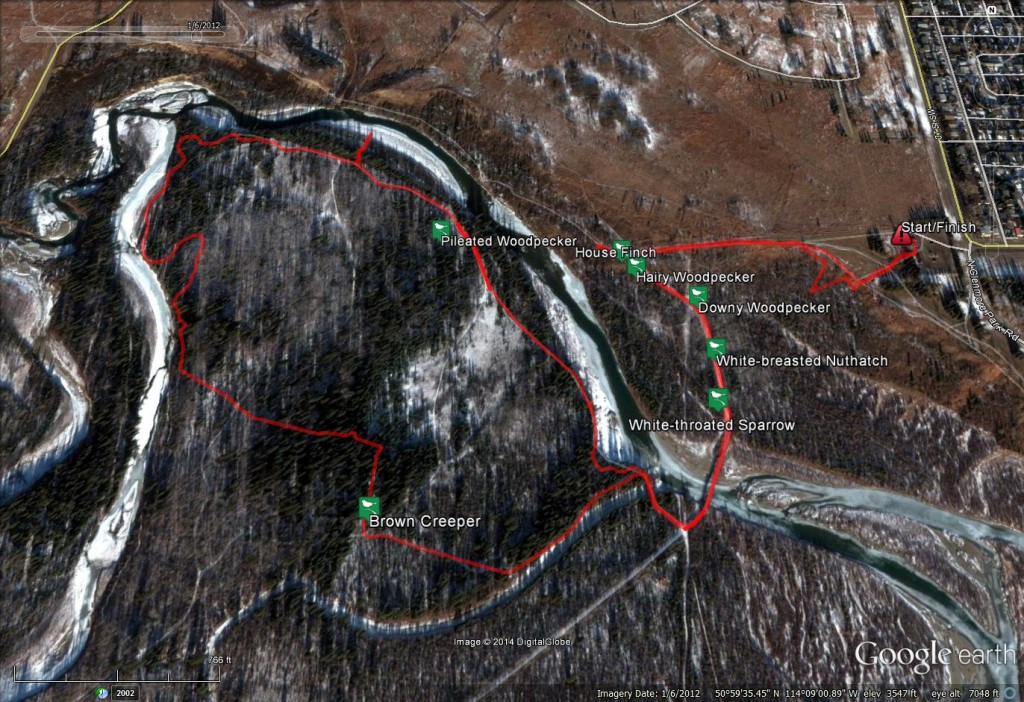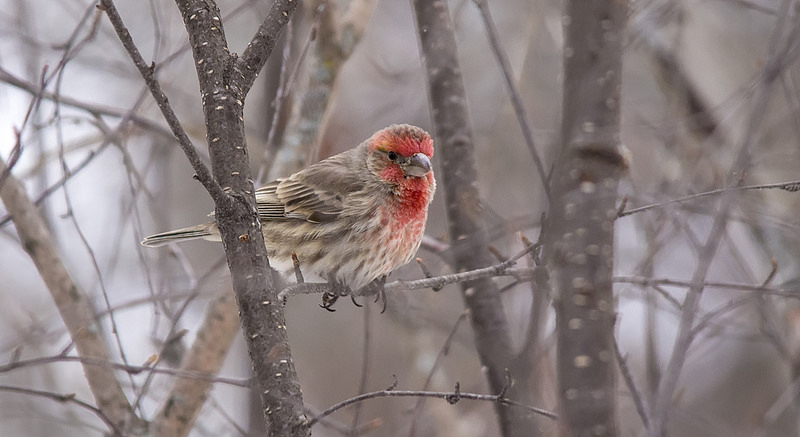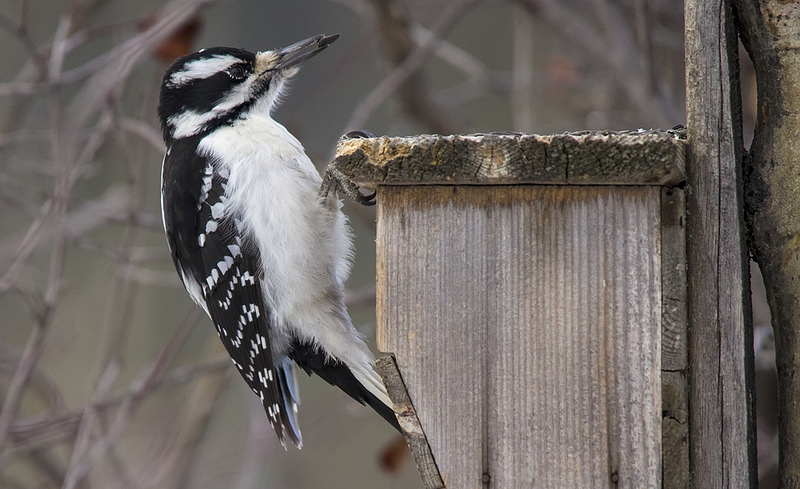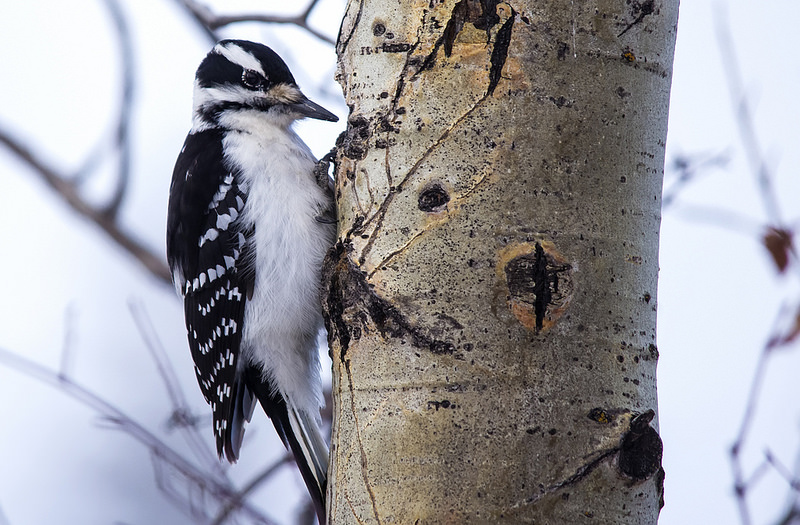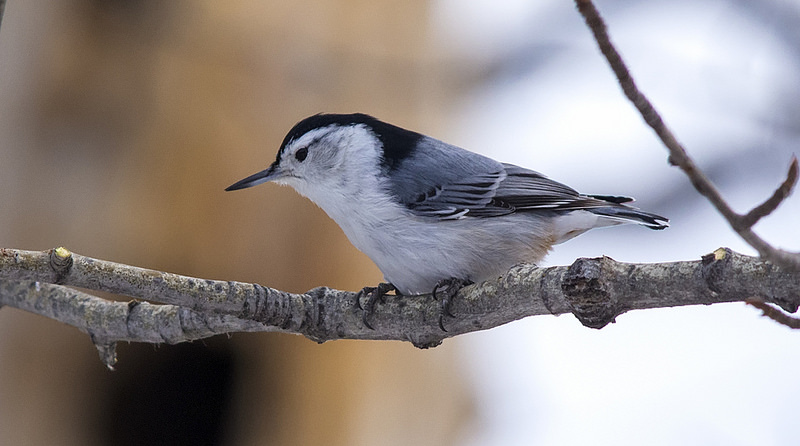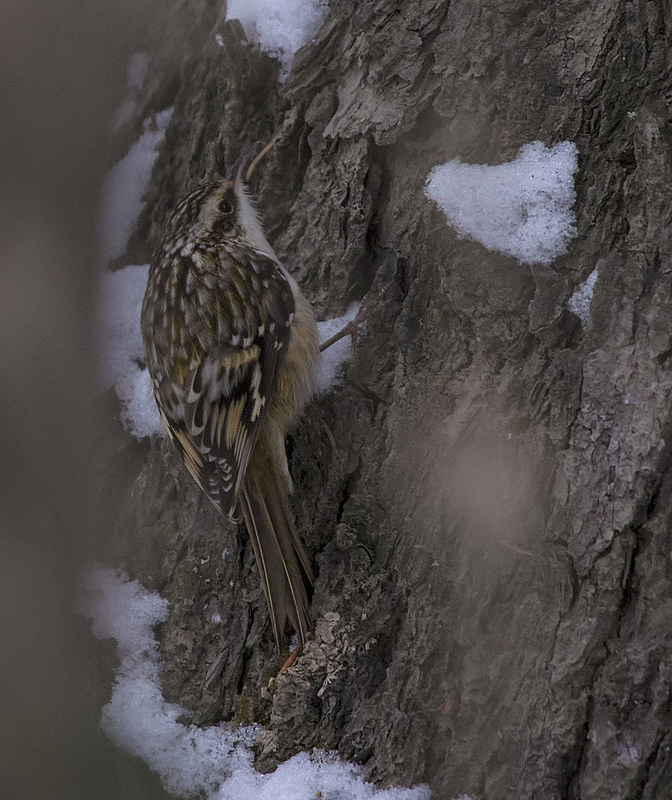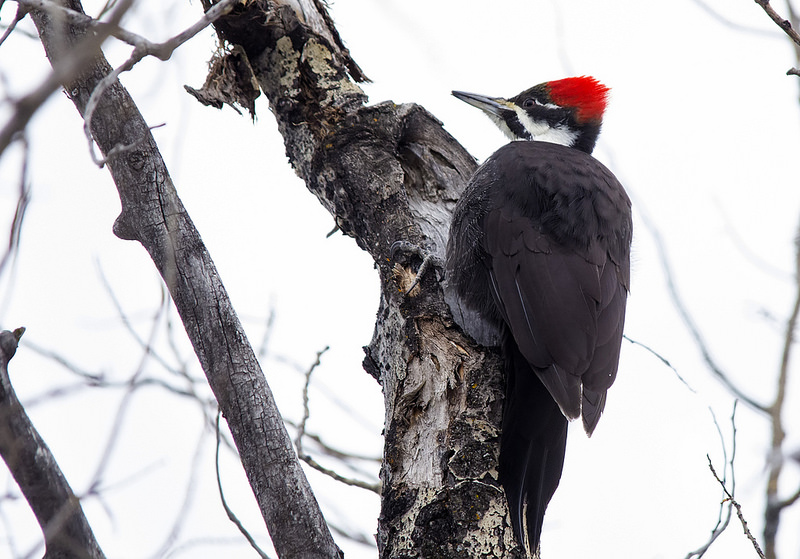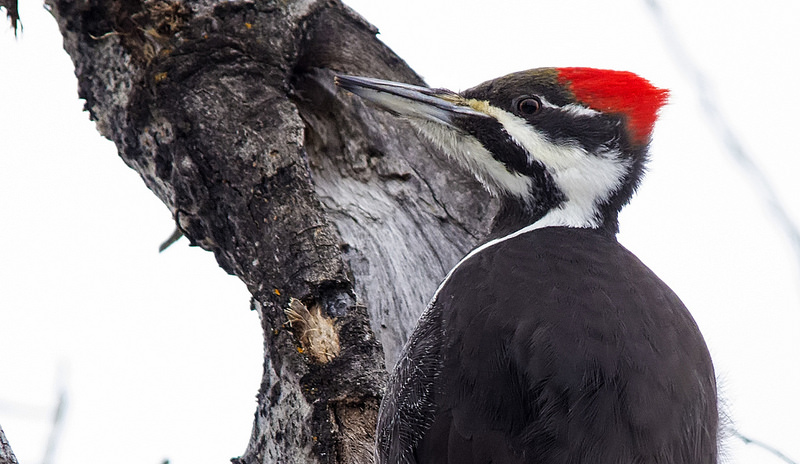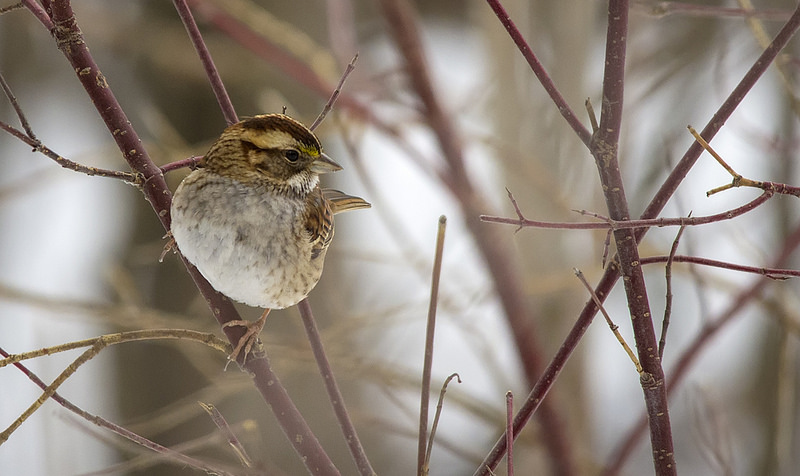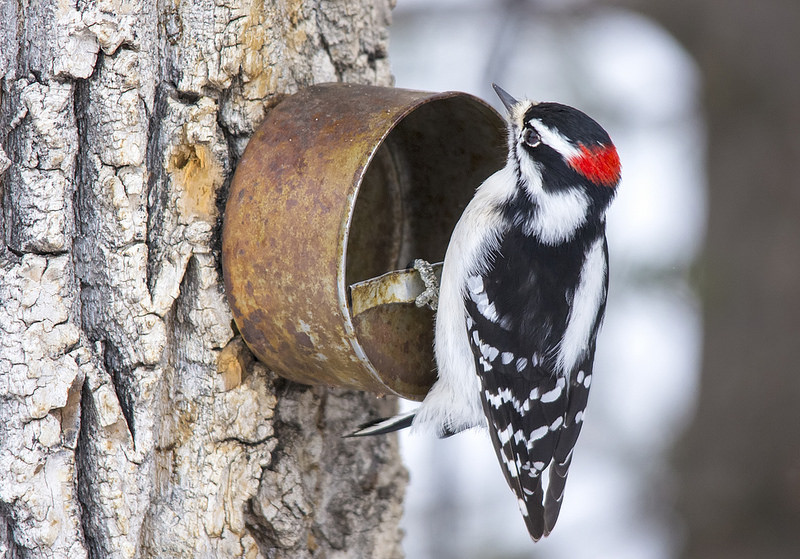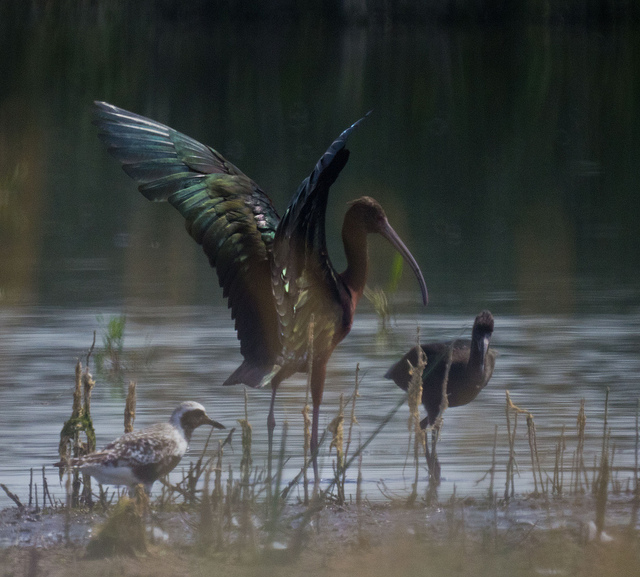By Cathy Warwick

If you are walking around Calgary and hear a bird singing its heart out in a long trilling song, it is most likely a House Finch. These small birds are identified by their brown bodies, heavy beaks and the red colour on the male. It’s hard to believe that these now ubiquitous birds were fairly rare in Calgary, until as recently as the 1990’s! In theory most of us can remember a time when there were no House Finches around. In practice I barely remember the 90’s. Look at a group of birds at any feeder now and you will probably see some. The females have a striped body, and I find if you look for the stripes you can tell them apart from the House Sparrow fairly readily.
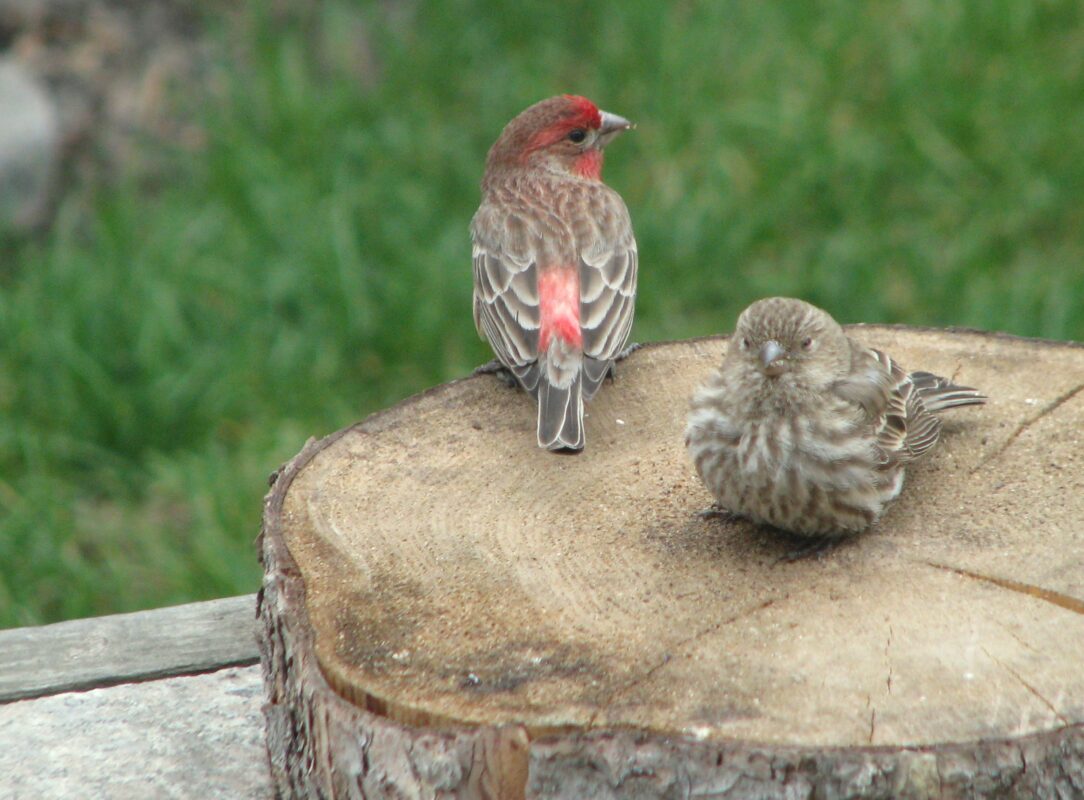
The House Finches origins start in the Southwestern US and Mexico. In the 1940’s someone tried to rebrand them as a ‘Hollywood Finch’ and sold them to pet stores in New York. In what way are they symbols of Hollywood I’m not sure, it was a different time back then. The Migratory Bird act came into effect, and all of a sudden pet store owners had illegal birds in their store. What do you do with a bird you don’t want? You open the window and let it fly away! If that bird is a tough and hardy finch, it will spread across North America.
The House Finch is prone to an eye disease called Mycoplasmal Conjunctivitis. If you see one with red puffy eyes don’t bother running out with tiny little cucumber slices, that bird is too far gone. According to Project FeederWatch you should take down your feeder for a couple days and then wash it. This will stop the spread of the disease to other House Finches.
These birds are fairly strict vegetarians, they fill up on seeds, buds, roots and foliage. Their colour is believed to be related to how well they are fed, if you see an orange male it could be that he isn’t getting all the nutrients he needs. Studies show the females choose the redder males. The male House Finch is responsible for feeding the young so it’s important to choose one that is a good provider. According to allaboutbirds, during courtship the male mimics regurgitating food to the female, showing off how good a feeder he is! These are monogamous birds, and very social, so really what you are seeing around the feeder are just a bunch of couples hanging out together.
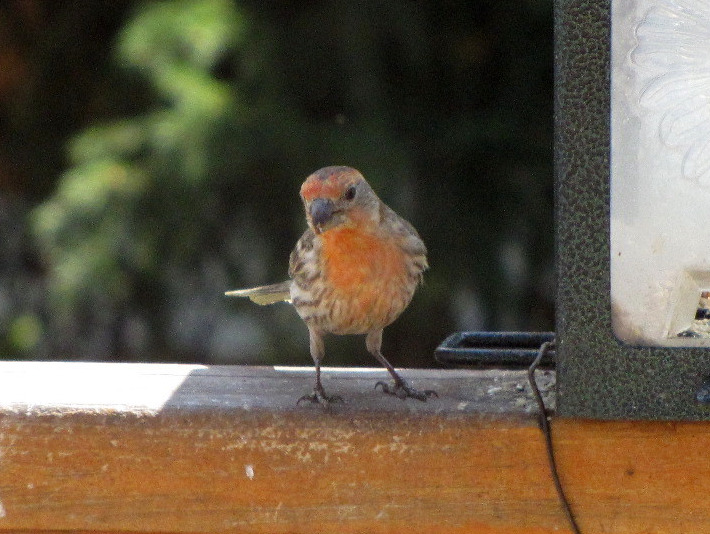
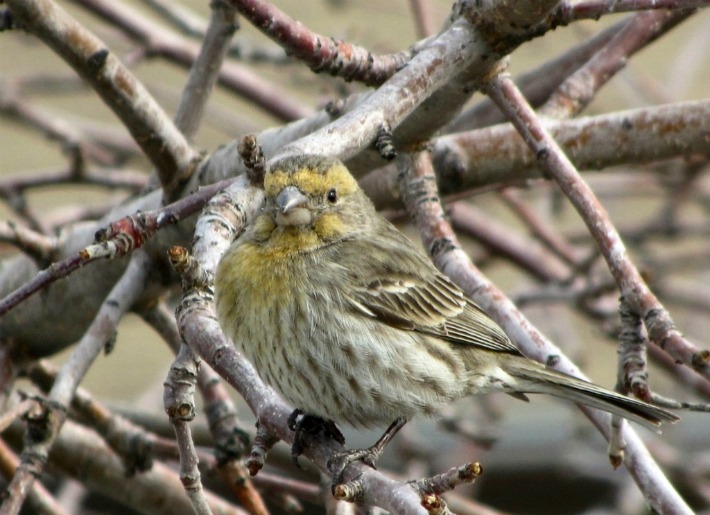
What I love about them is their song that seems so out of place on a cold day. Listen for a “zzz” buzzing sound that is part of the up and down warble and it sure to be a House Finch. You can look for the singer and you will see a little brownish bird way up in the heights of a tree singing, perhaps lamenting its ancestors’ move from Mexico. Or perhaps it’s trying to win back its Hollywood moniker with a winning solo.
More about the House Finch on All About Birds, including audio.
